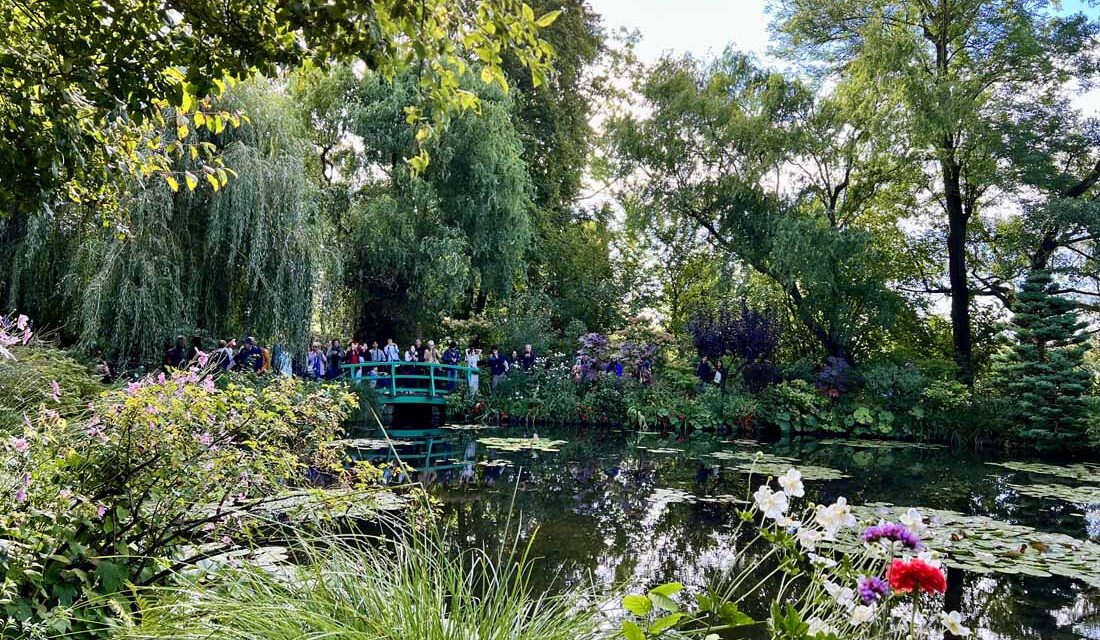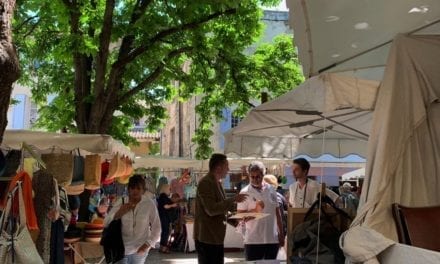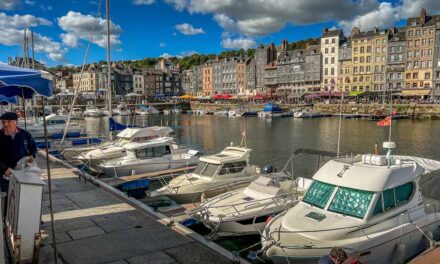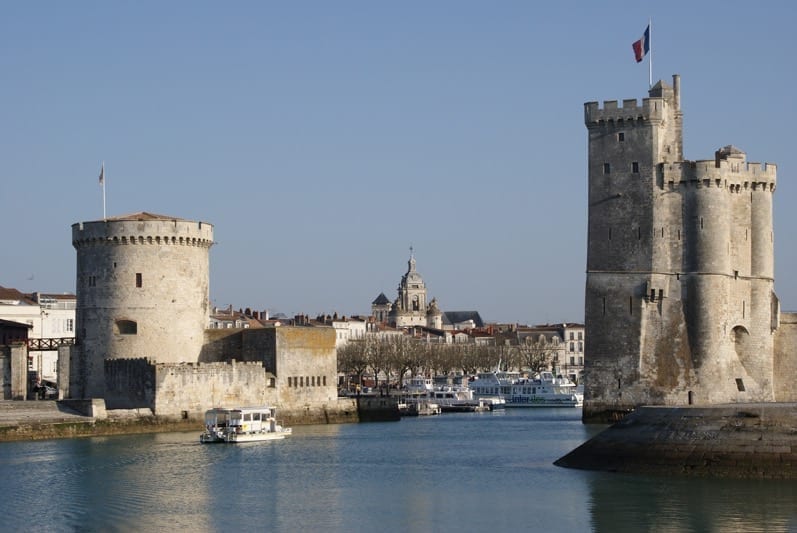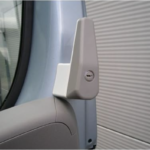Table of Contents
Exploring Monet’s House & Gardens
We started this year’s Autumn trip by visiting the famous house and gardens of the well-known French artist Claude Monet in Giverny, France. It took approximately three hours to drive there from Calais, and we were amazed by the beauty of his house and gardens. He truly created a living masterpiece.
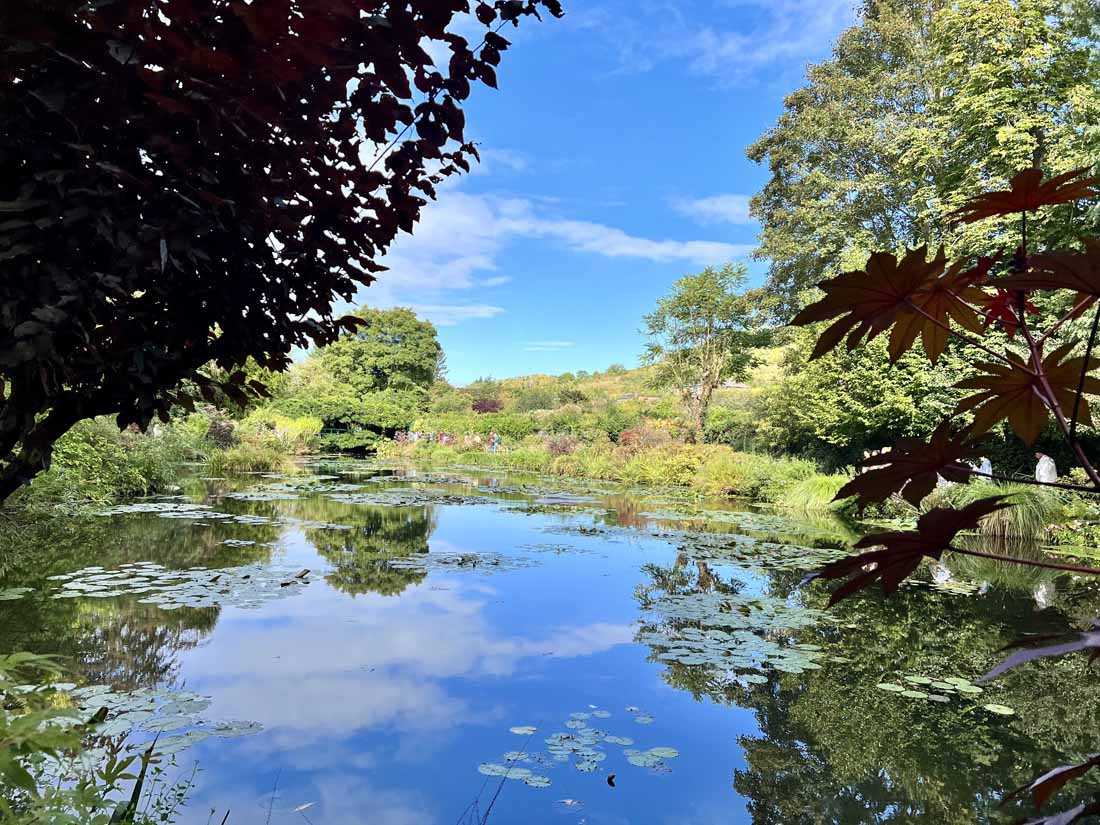
We parked our motorhome at the designated Aire next to the car park. Surprisingly, no water or toilet facilities were available, but since we only stayed overnight and had our own onboard facilities, it didn’t pose an issue.
Since arriving at 3 p.m., we postponed our visit to the house and gardens until the following day. Instead, we took a leisurely stroll around Giverny village. We were glad we did, as the village had several attractions, allowing us to start the next day feeling refreshed. We visited the Visitor Information Centre in the village to get maps and information about the garden. They also provide interesting insights into Monet’s life and work.
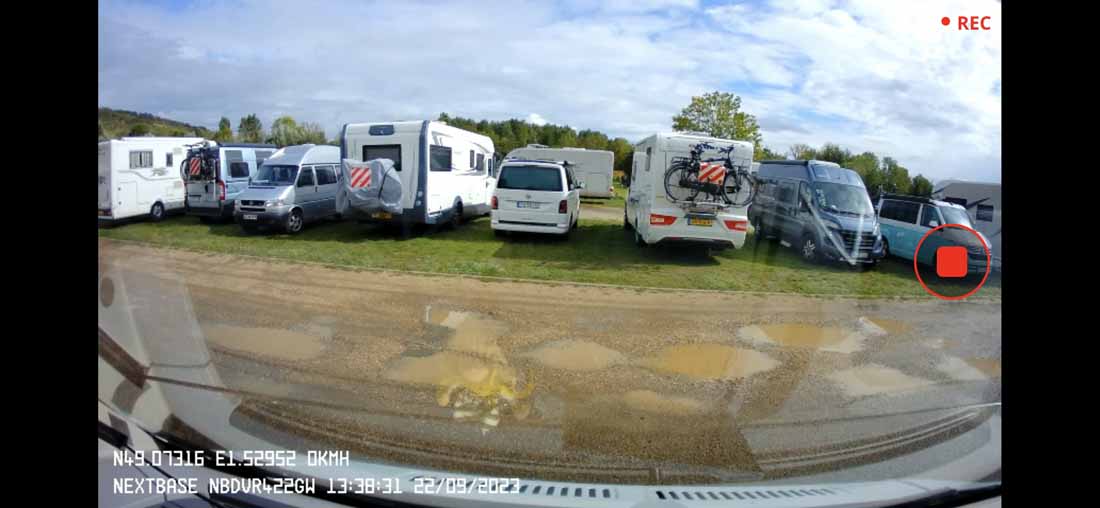
Next, we visited the museum near the garden. The Claude Monet Foundation: This museum houses a collection of Monet’s paintings, including some of his most famous works.
The village has several gift shops, a takeaway and a few restaurants.
The following day, we bought tickets to enter the house and gardens. Prices are 11 euros each.
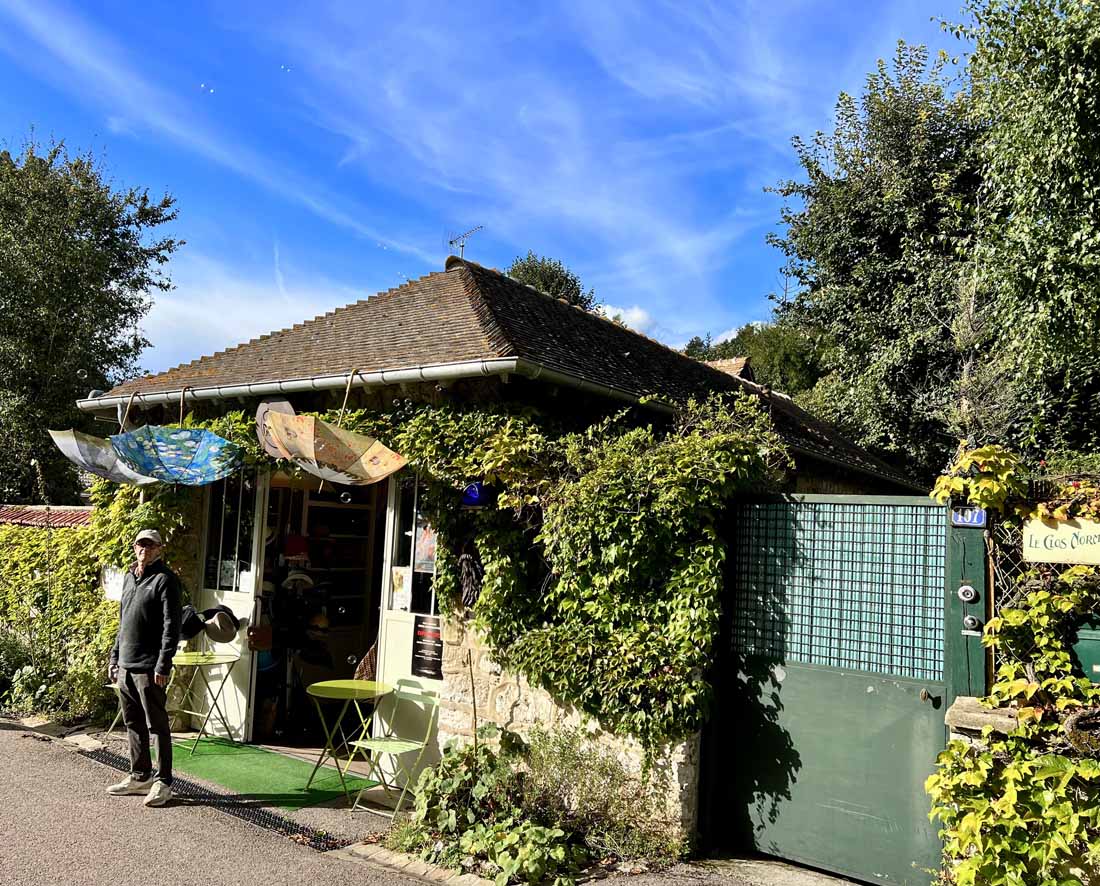
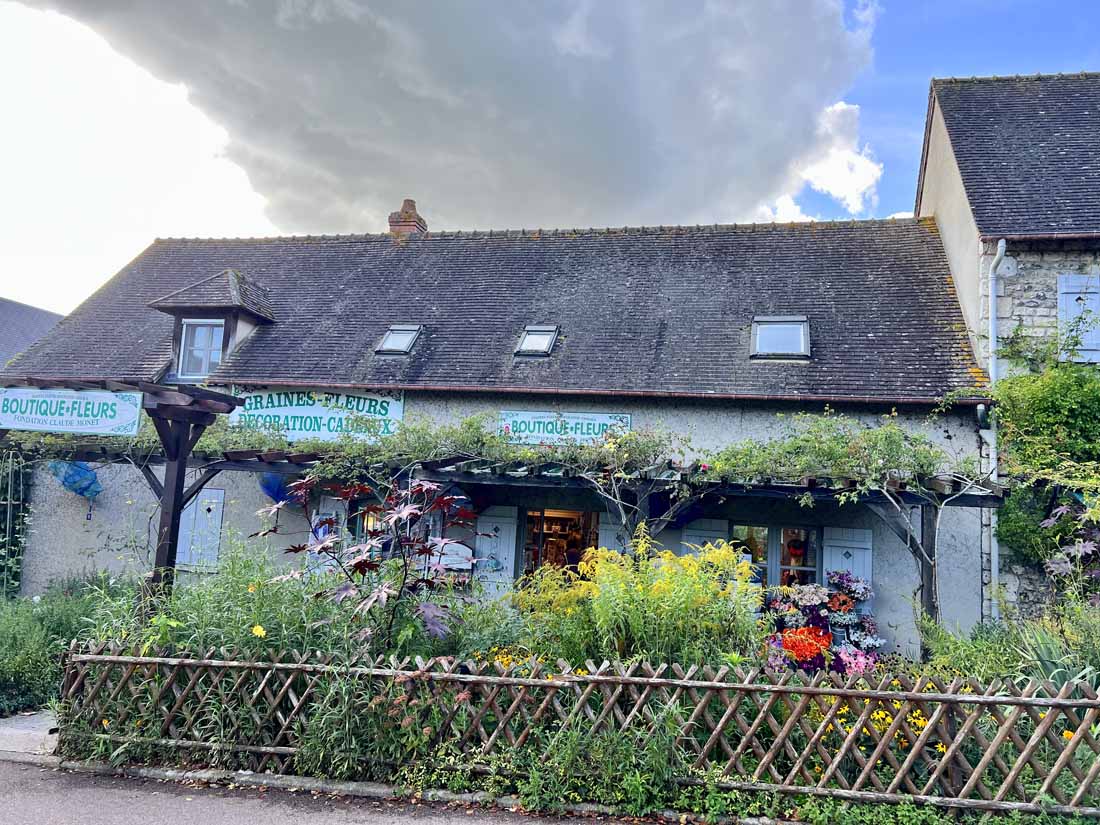
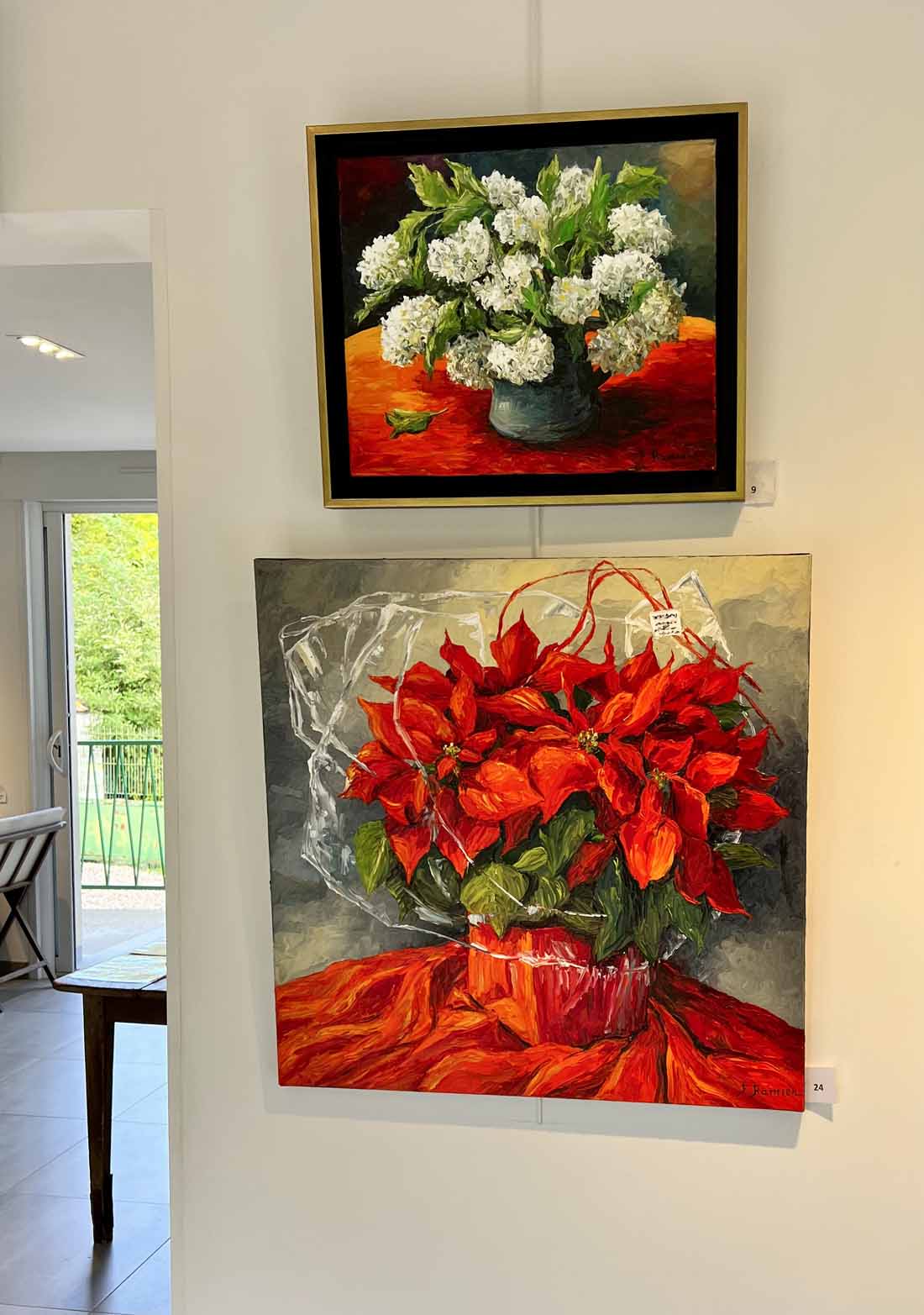
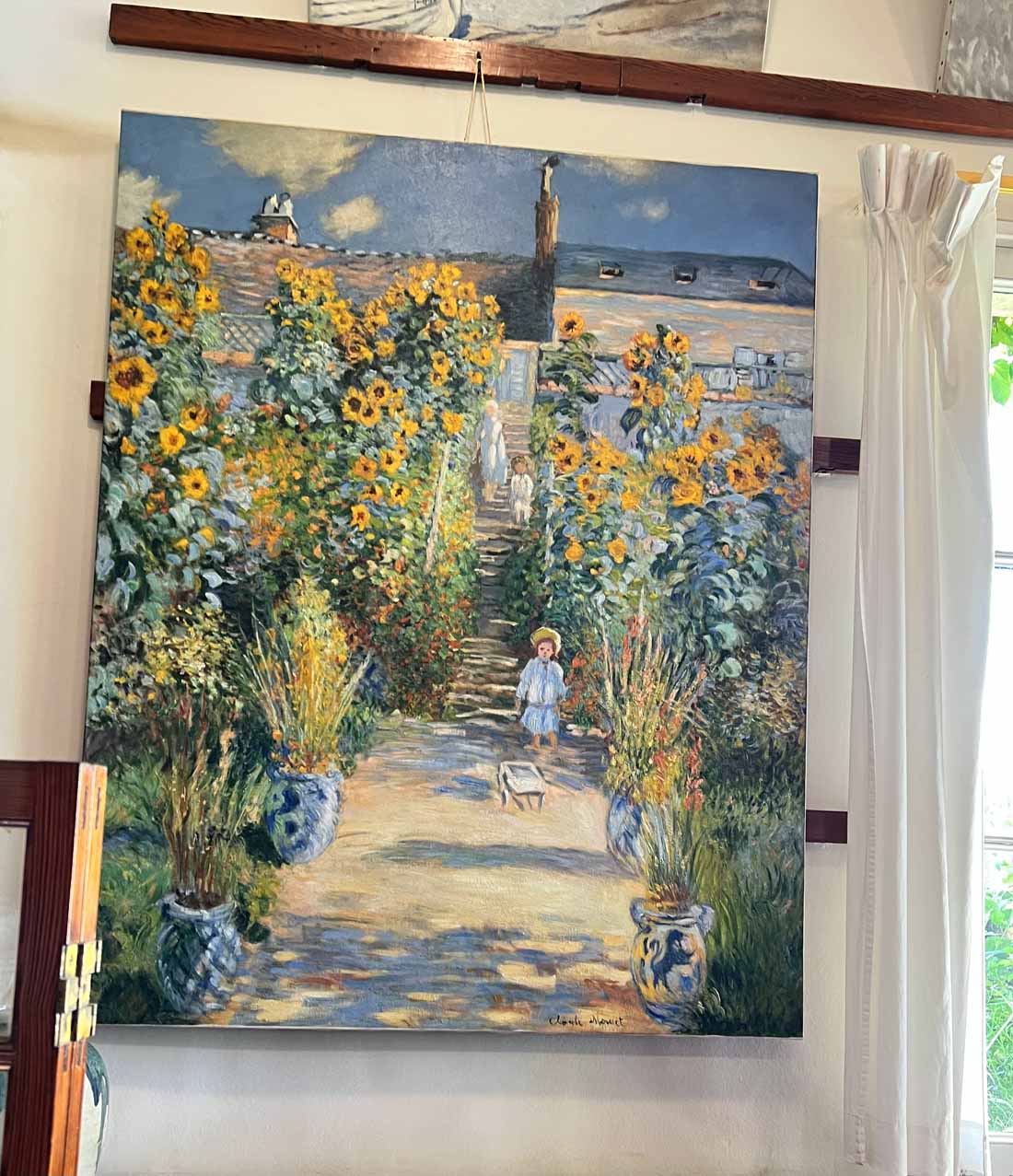
The Two Gardens
Monet’s garden comprises two distinct sections: the flower garden known as Clos Normand, situated in front of the house, and a water garden inspired by Japanese aesthetics located on the opposite side of the road.
These two segments of Monet’s garden offer a striking interplay of contrasts and harmonious complements.
In Monet’s garden, the land is split into areas with different types of flowers. Some are short, and some are tall, which makes the garden look full and vibrant. Among the flowers, we found fruit trees and pretty trees that make a home for climbing roses, tall hollyhocks, and colourful rows of annuals. Monet liked to mix simple flowers like daisies and poppies with very special ones.
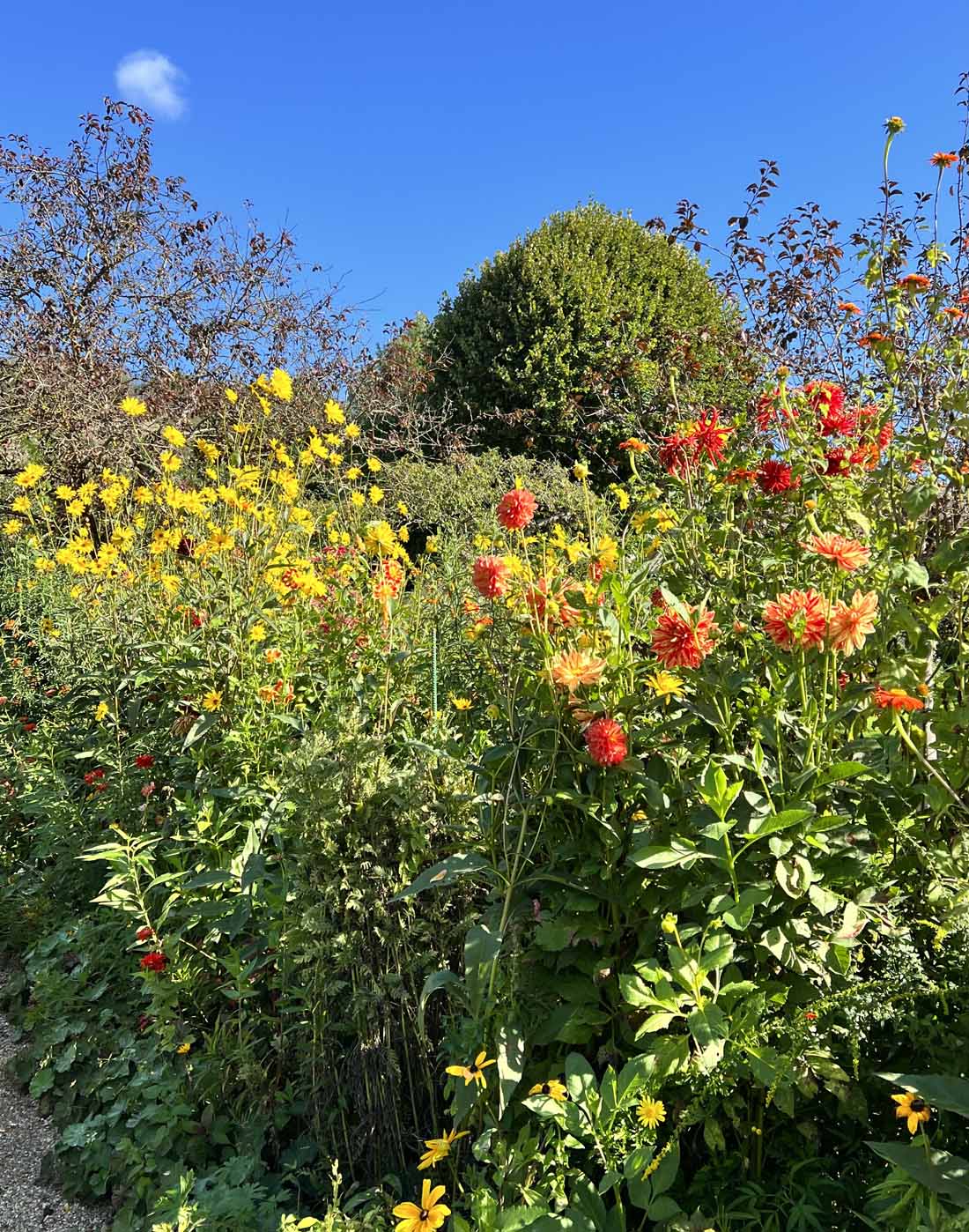
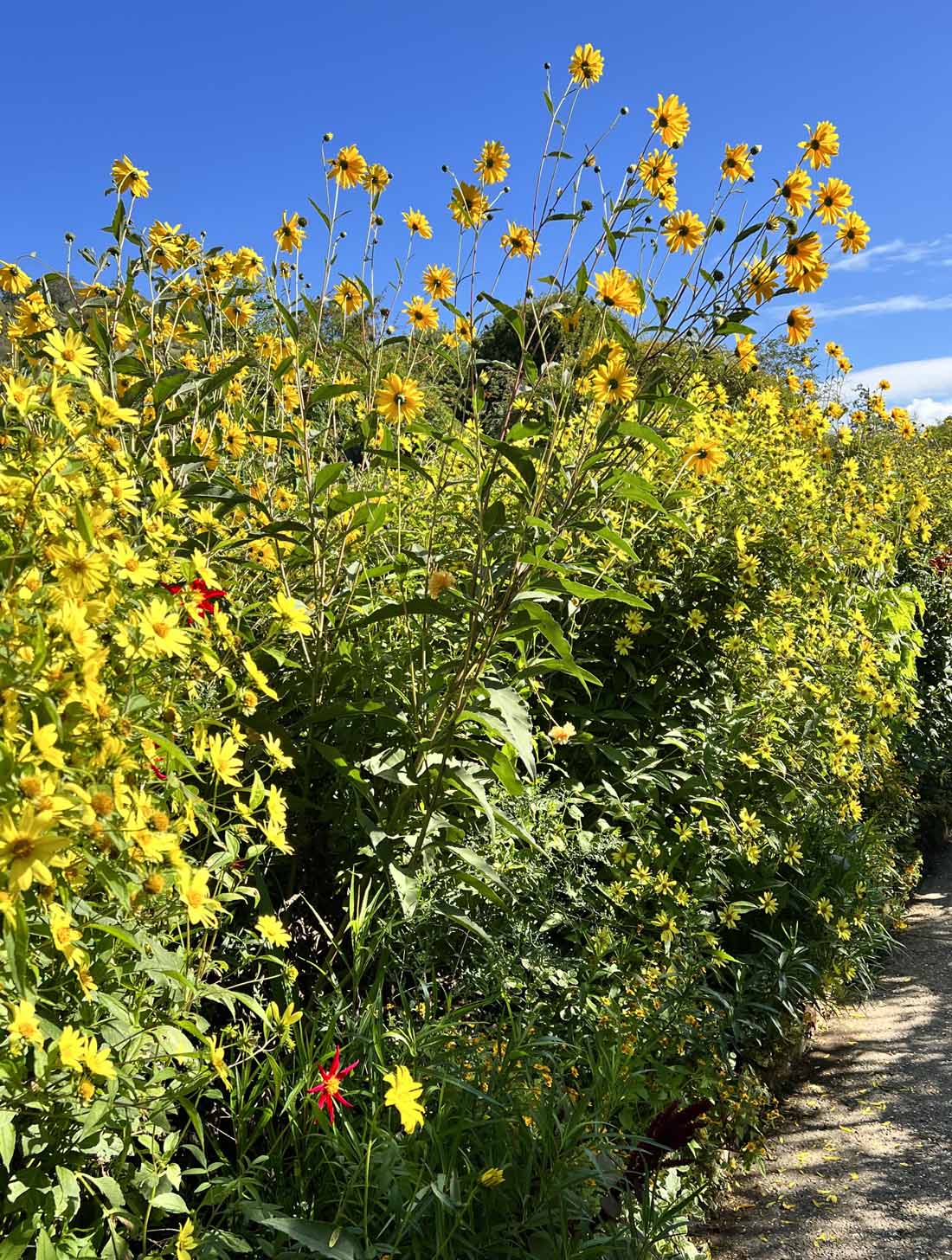
In the middle, there’s a path covered by metal arches where climbing roses grow. Other rose trees line the railing along the house. By the end of summer, the path is filled with bright nasturtium flowers.
Monet didn’t want his garden to look neat and controlled. He let the flowers grow somewhat freely and chose them based on their colours.
As the years went by, he became increasingly interested in plants, swapping them with his friends Clemenceau and Caillebotte. He even spent a lot of money on young plants because, as he said, “All my money goes into my garden.” But he also said, “I am in raptures,” which means he was pleased.
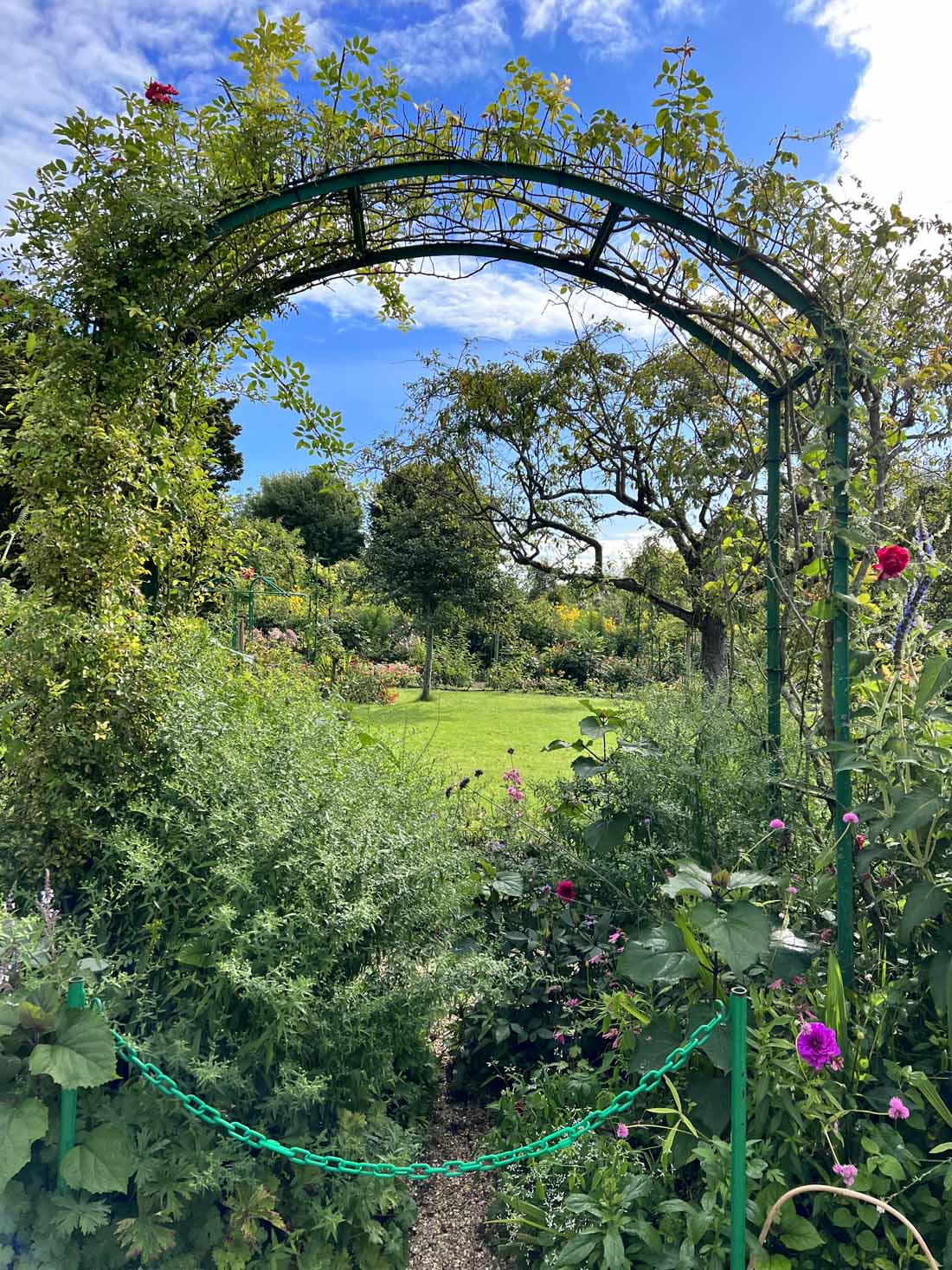
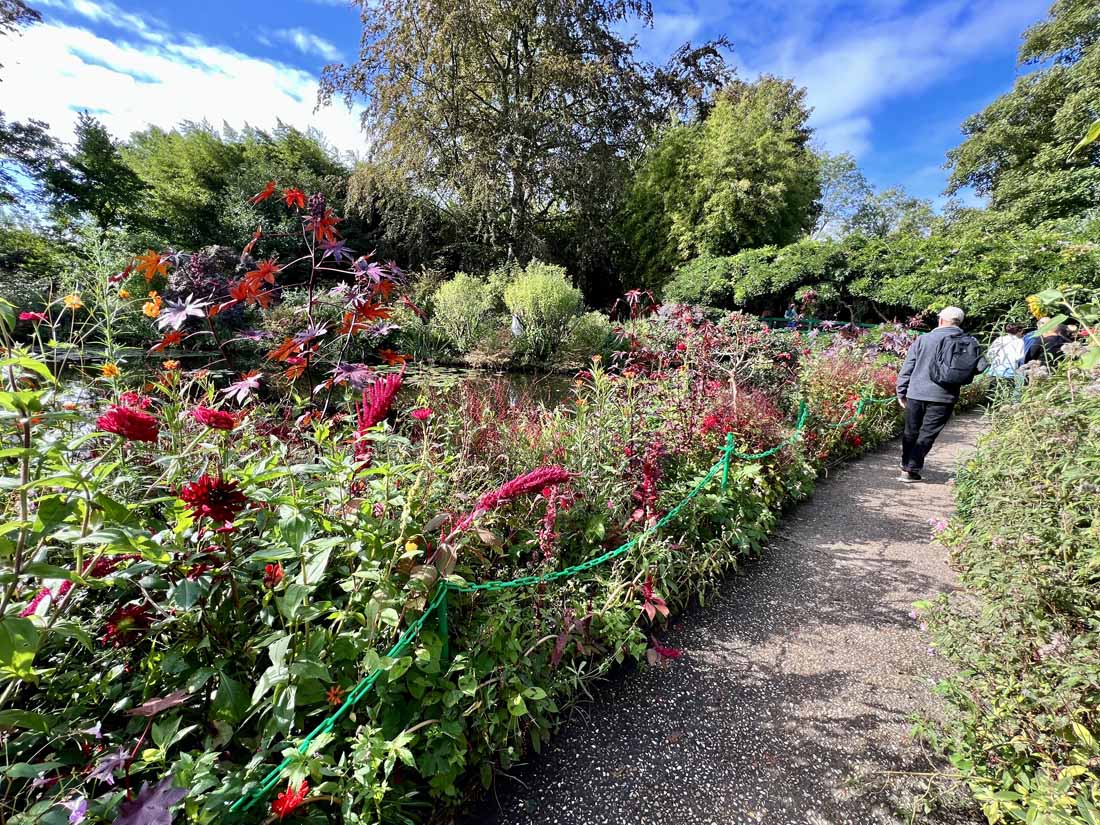
I was really excited about going to the Water Garden, especially to see the famous Japanese Bridge Monet painted many times. The water lilies, weeping willows, and their reflections in the pond make for a calm and picturesque scene, and it lived up to my expectations.
The Water Lily Studio is where Monet painted his famous Water Lilies series. It’s been restored to look as it did during his time, offering a glimpse into his artistic process.

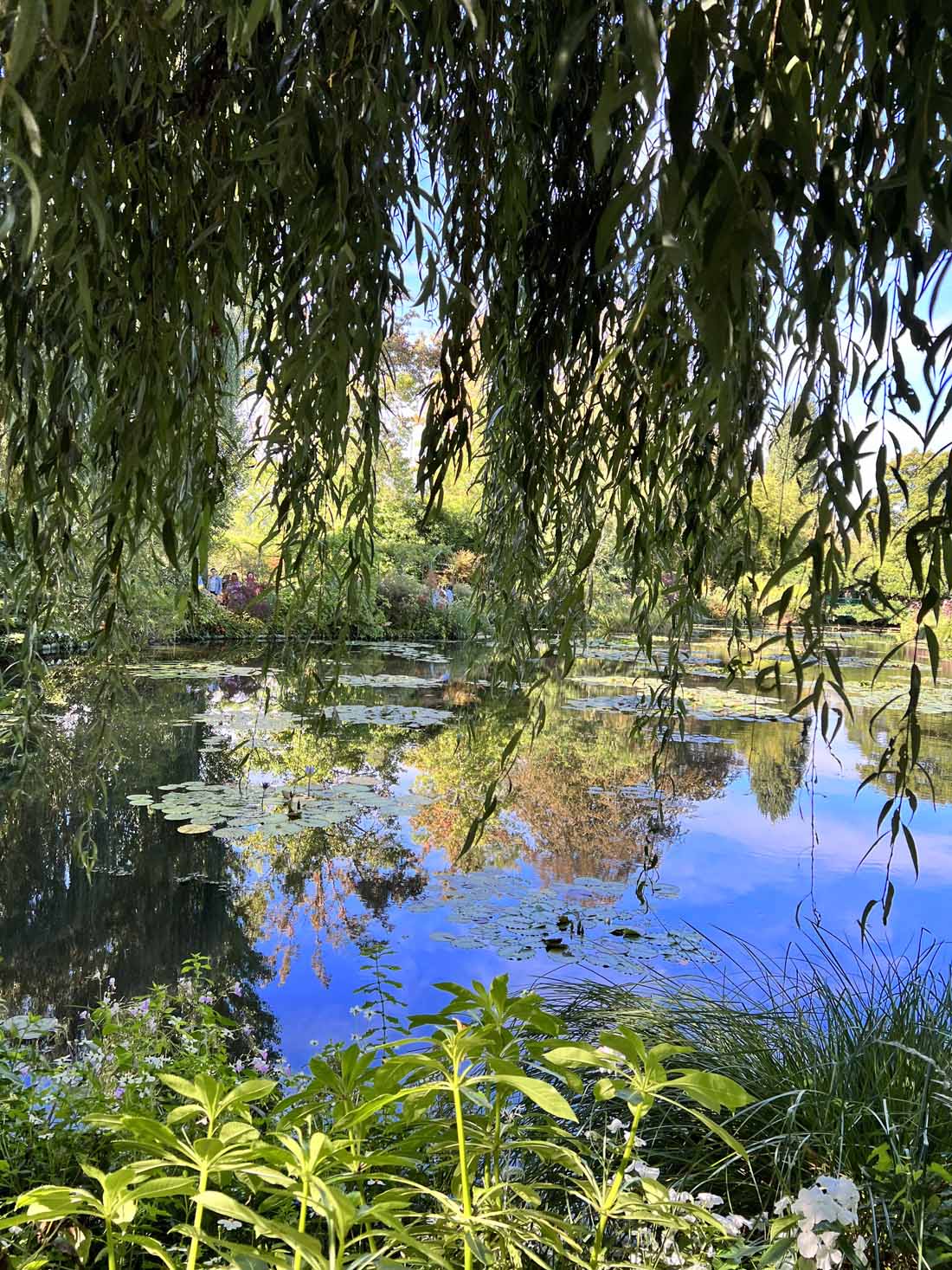
After the garden, we explored the interior of Monet’s charming pink house. We saw his personal living spaces, including his bedroom, dining room, and kitchen, which are also decorated with his own paintings and Asian art collections.
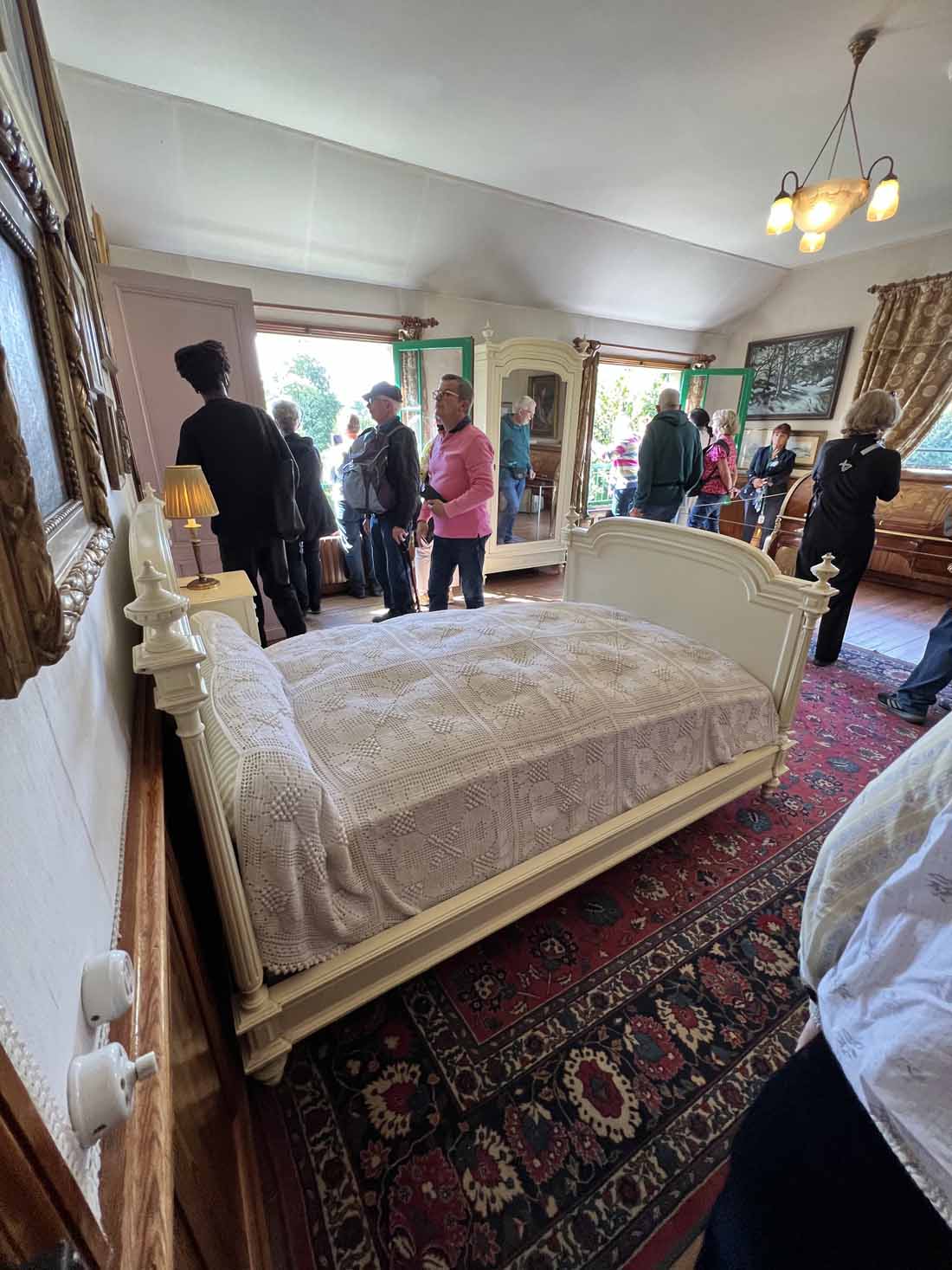
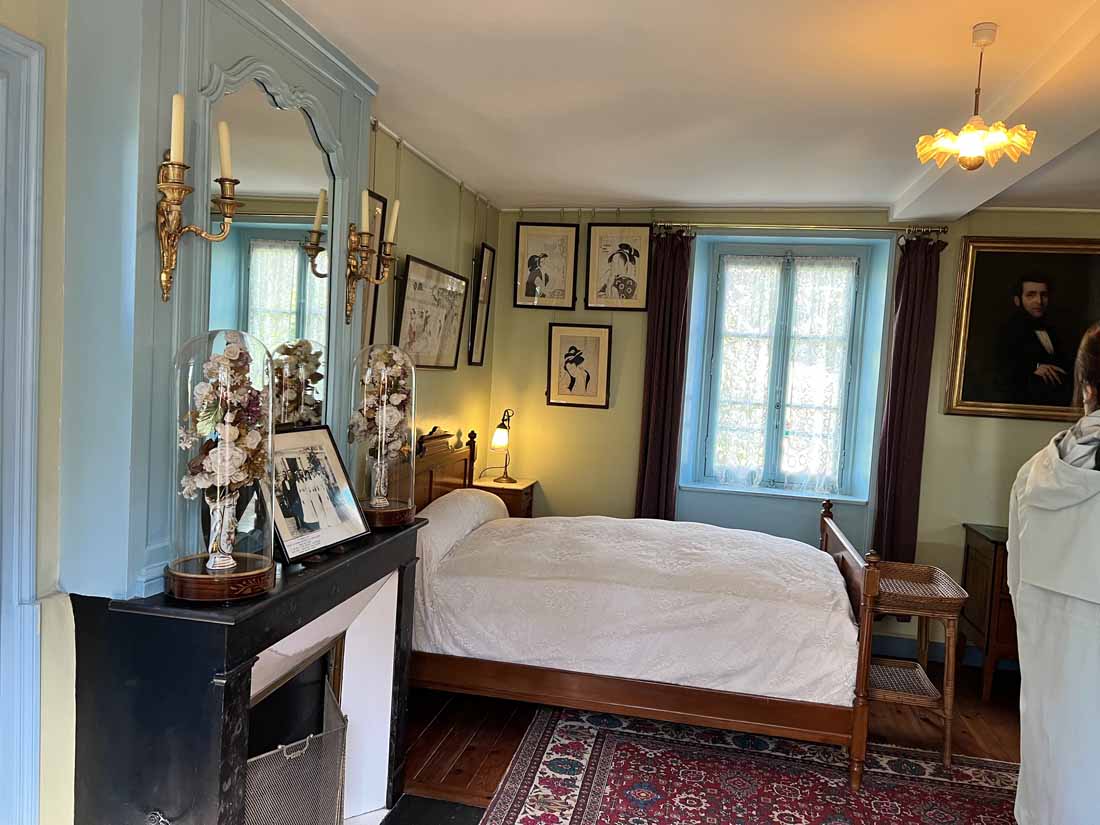
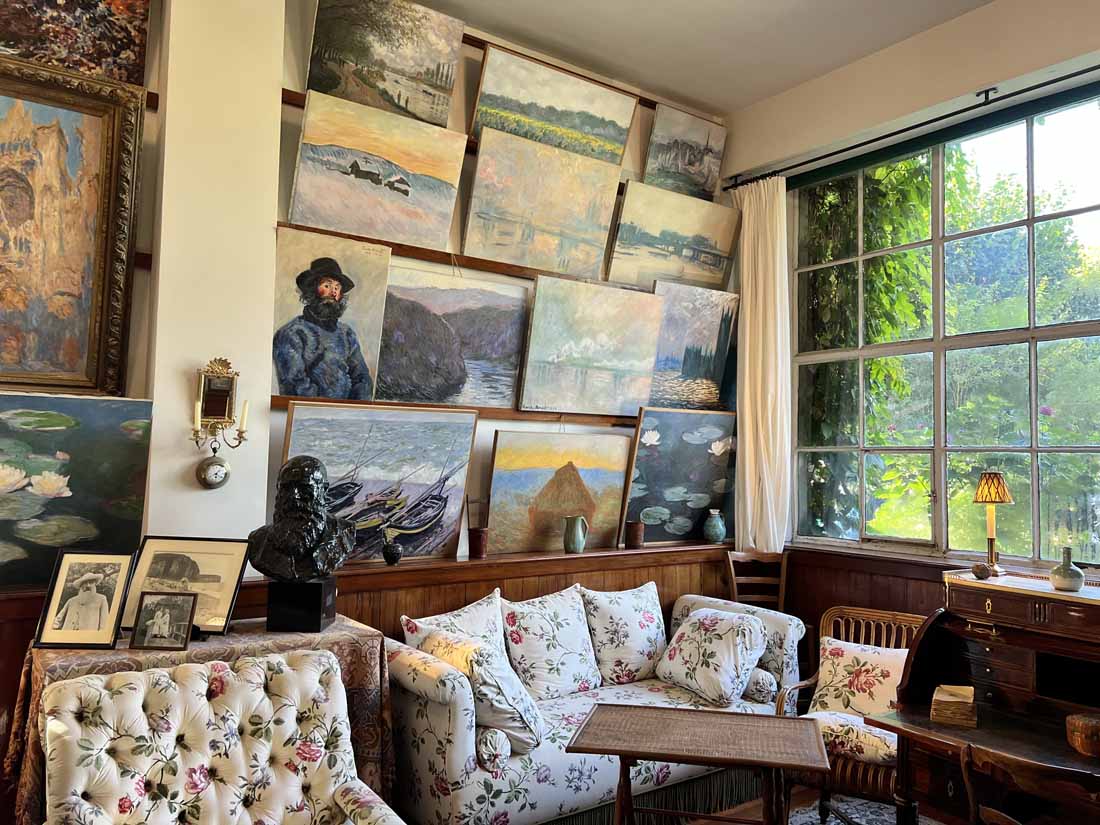
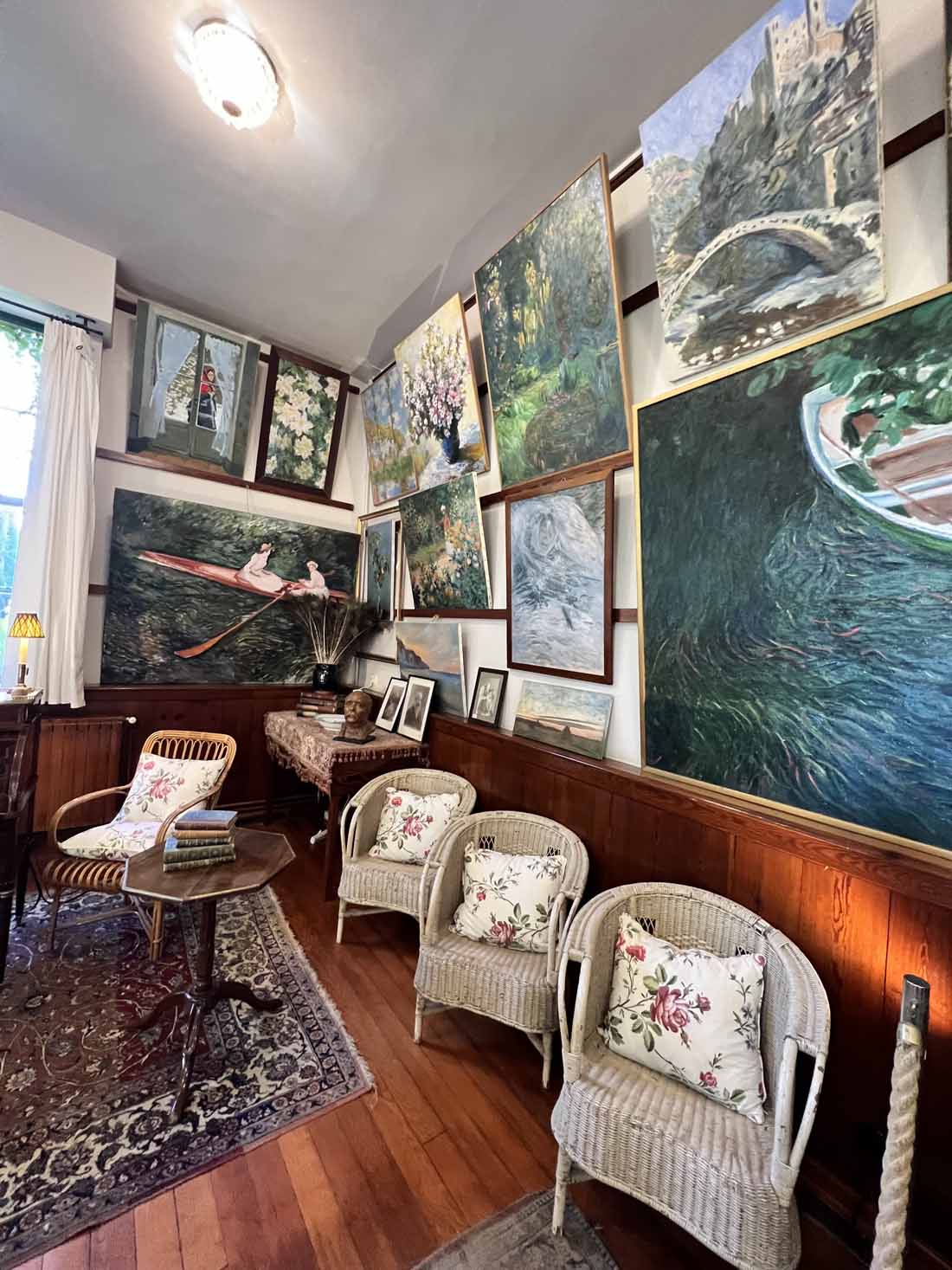
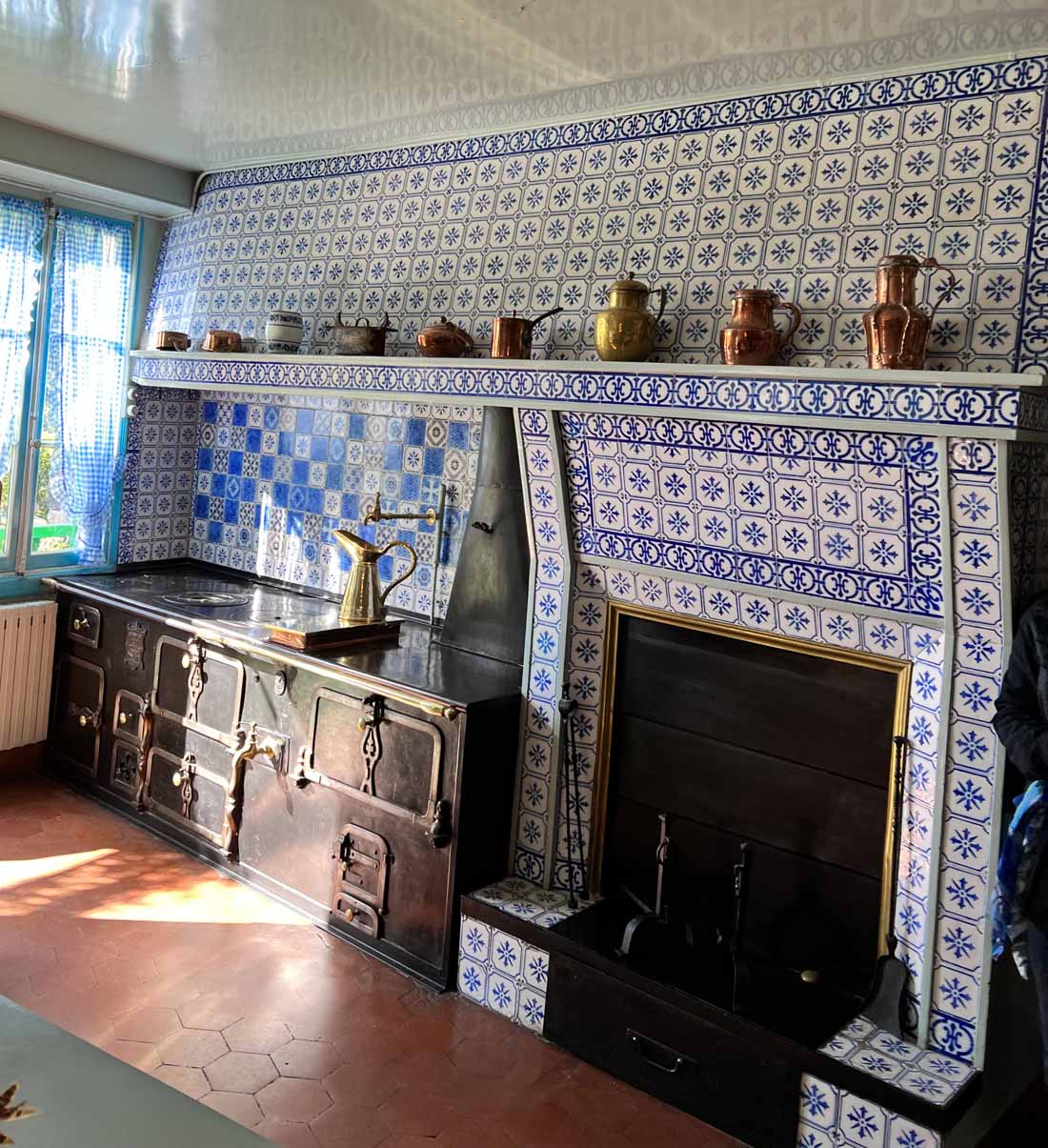
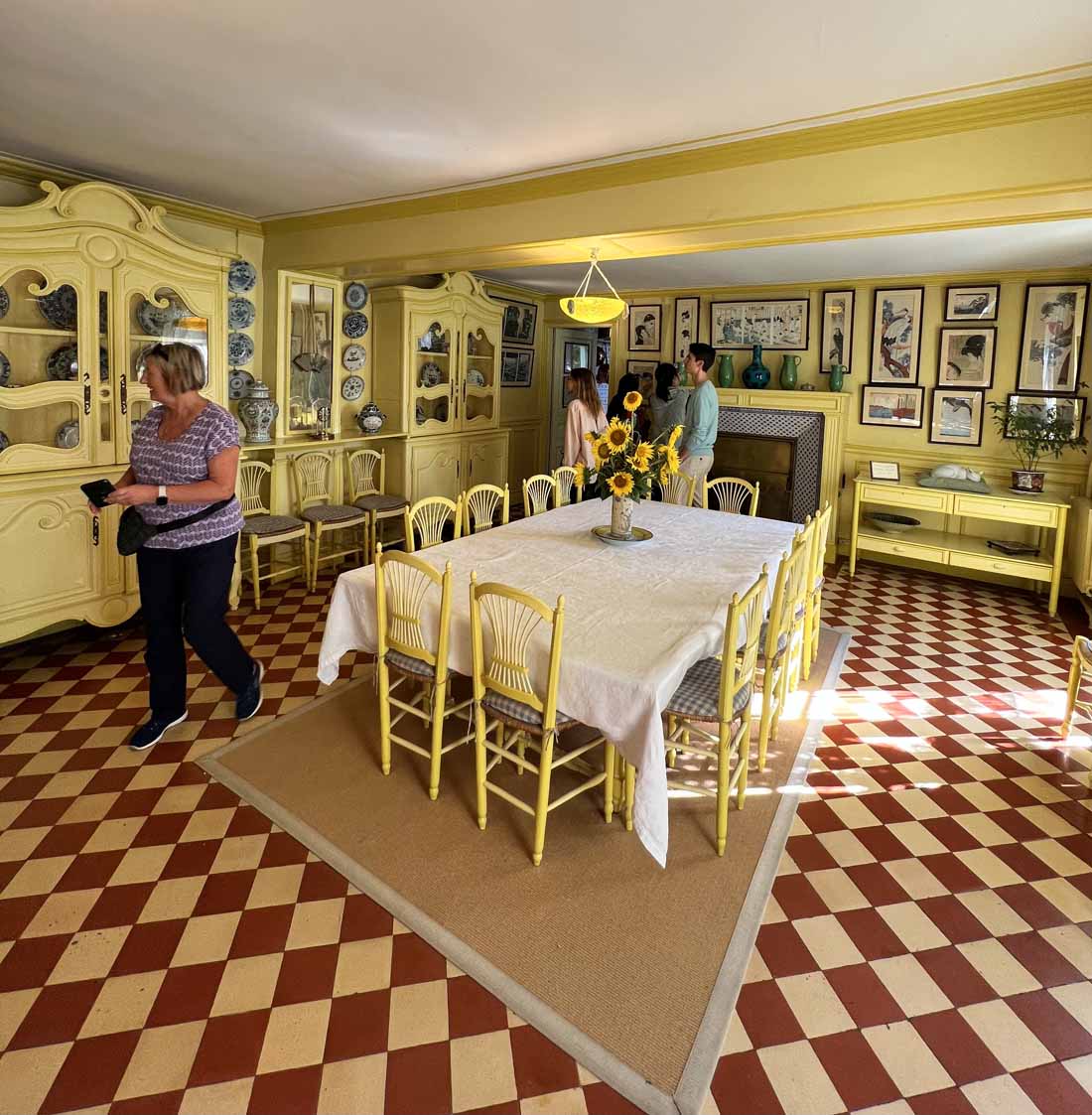
We took our time around the gardens, enjoying the details. It’s a place to return to as the garden changes with the seasons, so it’s worth revisiting.
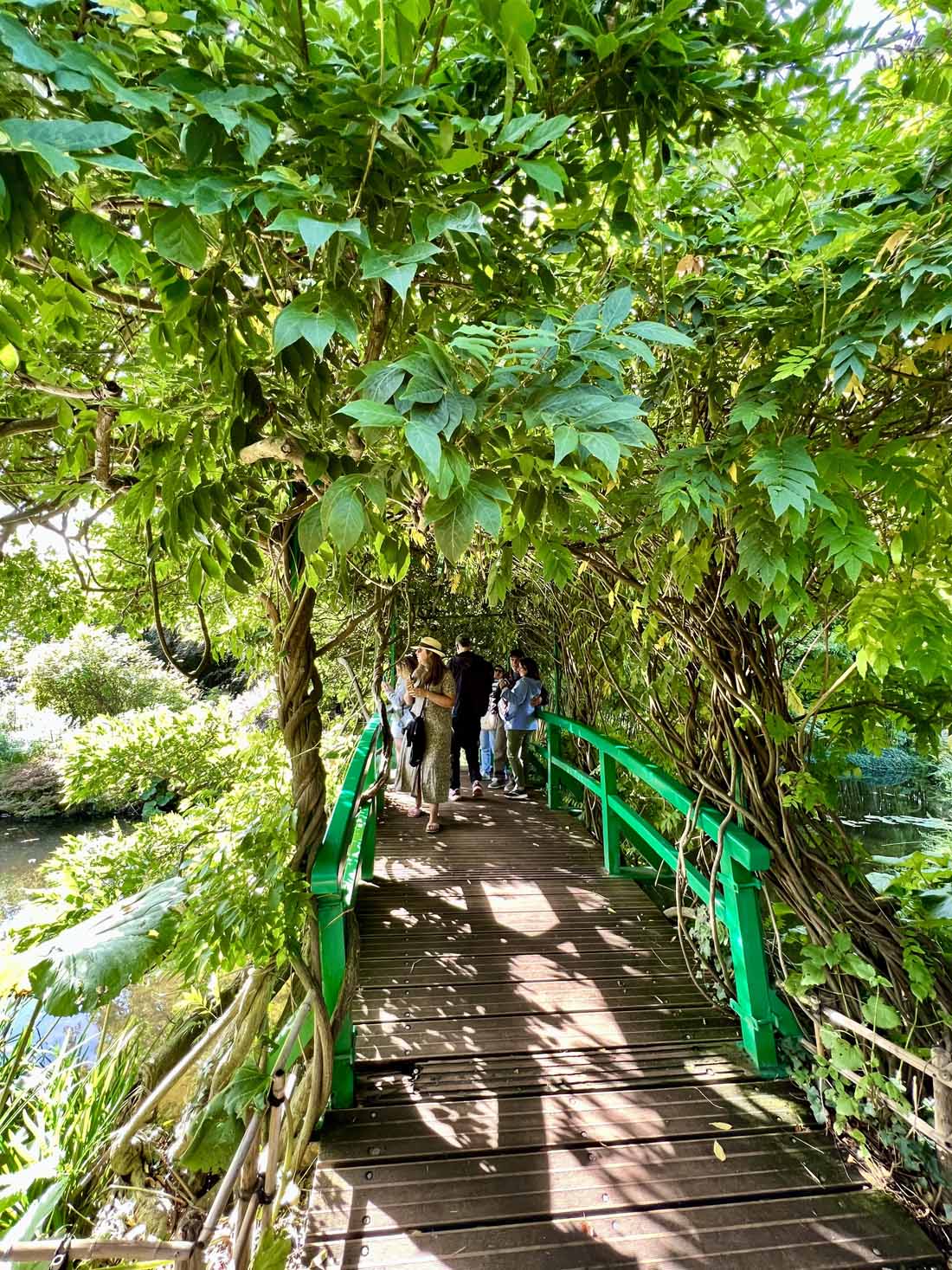
Giverny was the home of Claude Monet for 43 years, from 1883 to 1926. During this time, he changed the house to suit his tastes and his family’s needs.
At first, the house was small and called the “House of the Cider-Press” because there was a place nearby to make apple juice. Monet made the house bigger by adding to both sides. Now, it’s 40 meters long and only 5 meters deep.
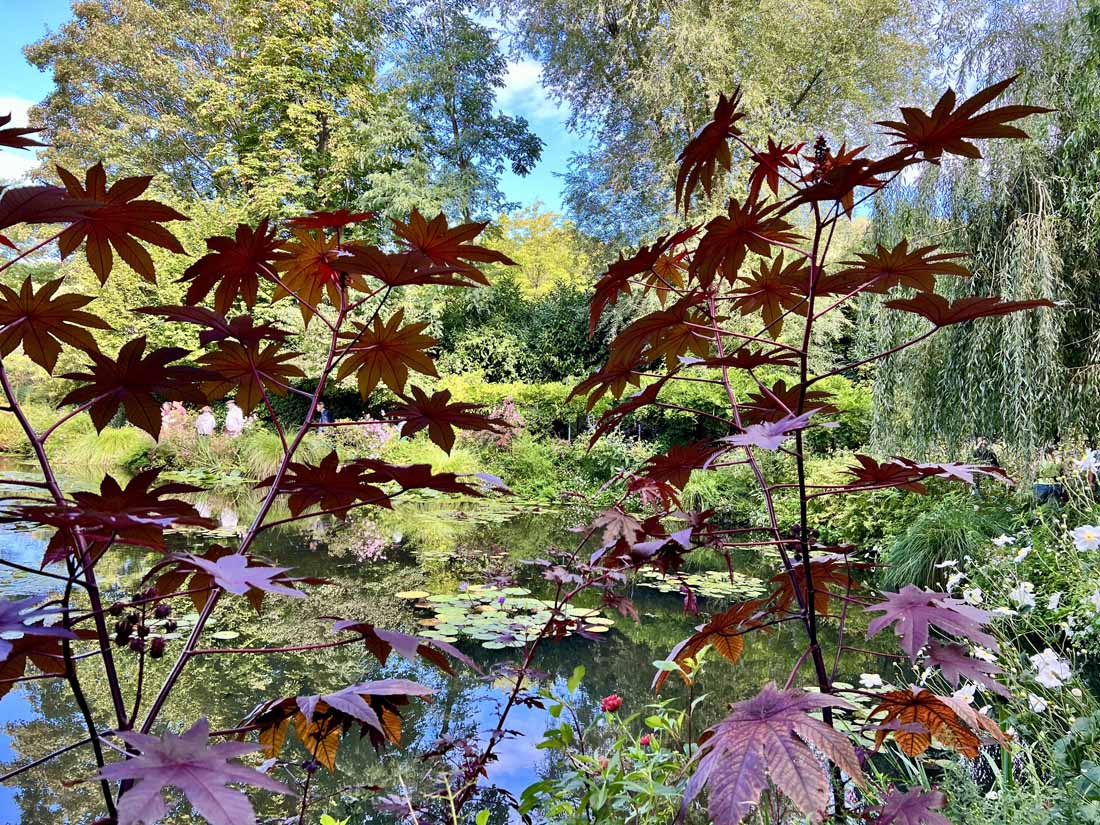
Next to the house, there was a barn. Monet changed it into his first studio by adding a wooden floor and stairs to connect it to the main house. Since Monet mostly painted outside, he needed a place to keep and finish his paintings.
Above the studio, Monet had his rooms – a big bedroom and a bathroom. He liked to work and rest on the left side of the house.
Monet was a successful painter, so he added more to the house. You can see the parts he added by looking at the size of the windows. The new ones are wider than the ones in the middle of the building.
At the other end of the house, Monet designed a big kitchen to cook meals for a big family and when they had guests. Monet’s four stepdaughters had their bedrooms above the kitchen, while his two sons and step-sons slept in the attic.
Monet chose pink for the outside walls and green for the shutters. Back then, shutters were usually painted grey, but Monet preferred bright colours. In addition, he built a covered walkway in front of the house, planted climbing roses, and grew Virginia creeper outside. He wanted the house to look like it belonged to the garden.
The house has three doors. The left door goes to Monet’s rooms, the middle is the main door, and the right is for easily going in and out of the house, especially to the kitchen.
Conclusion
Claude Monet’s house and gardens show how art and nature can be deeply connected. The beautiful flowers and calm water scenes were like a special place for him, inspiring his paintings. When you visit this peaceful place, it feels like you’re inside one of his beautiful paintings of Giverny.
For people who love art and nature, visiting Monet’s house is more than just a visit. It’s an experience that feels timeless and leaves a lasting impression on your heart and mind.
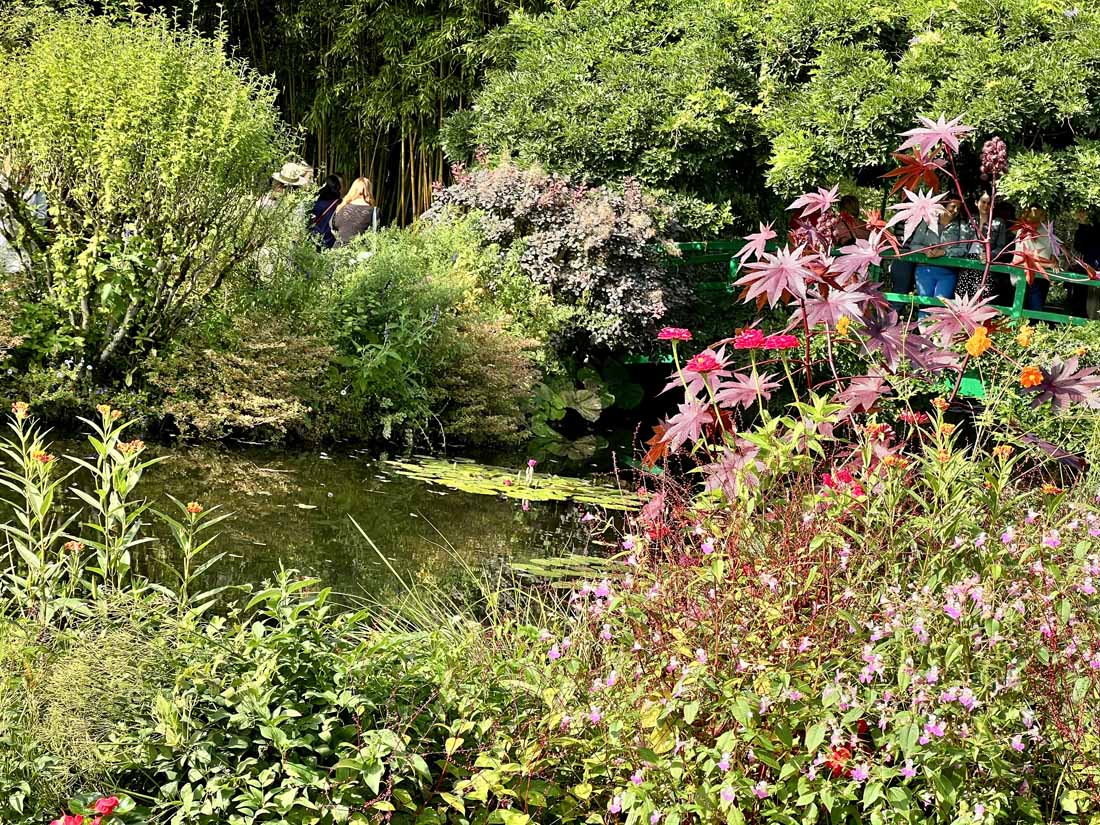
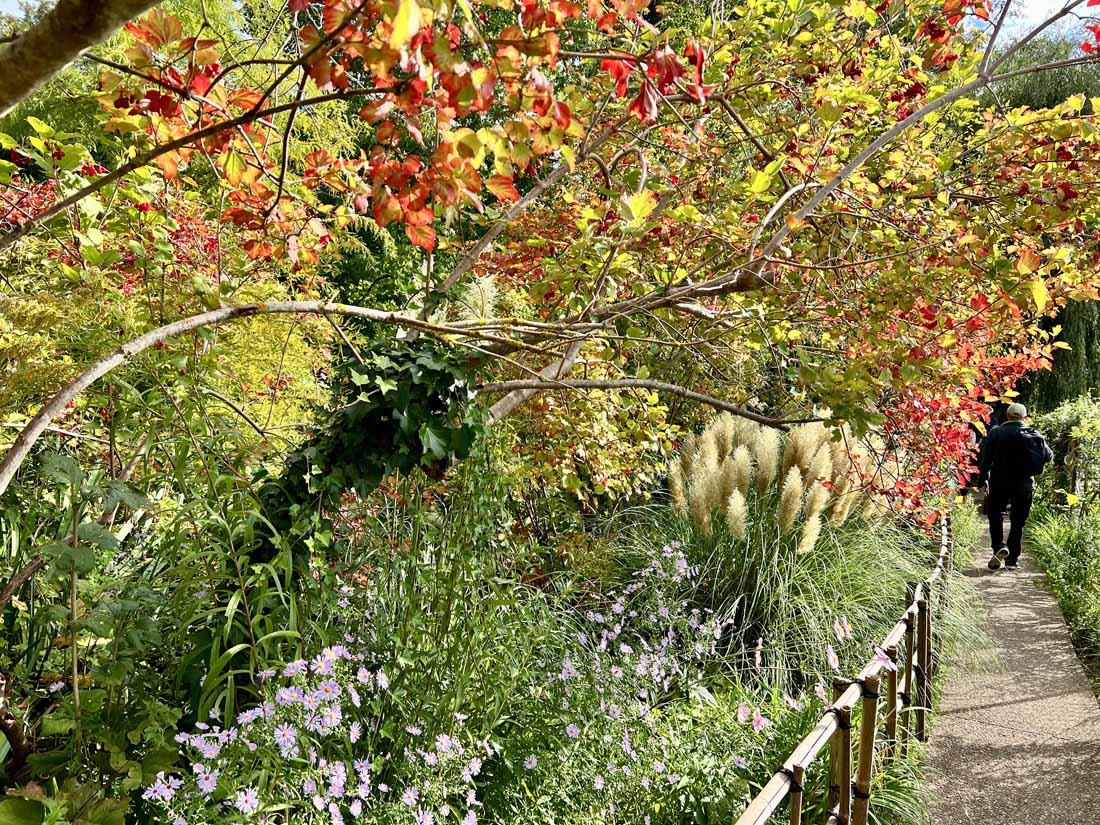
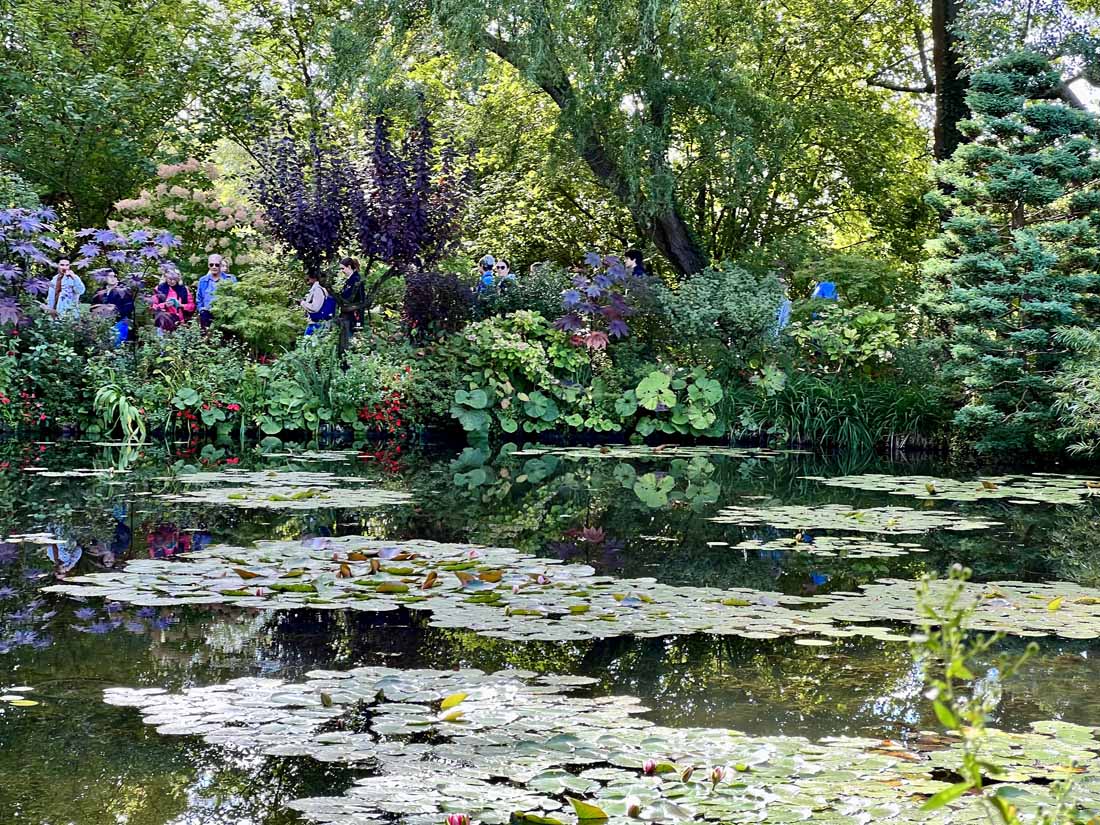
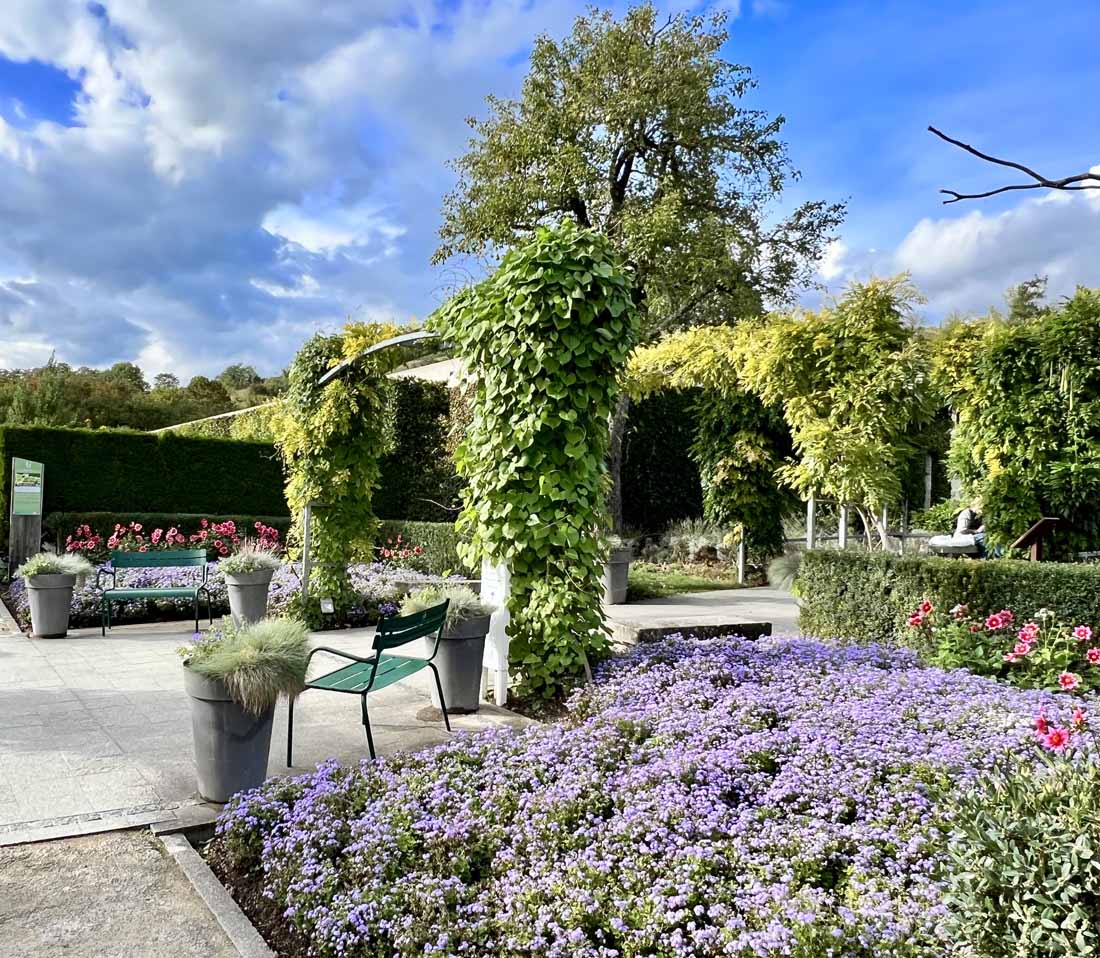
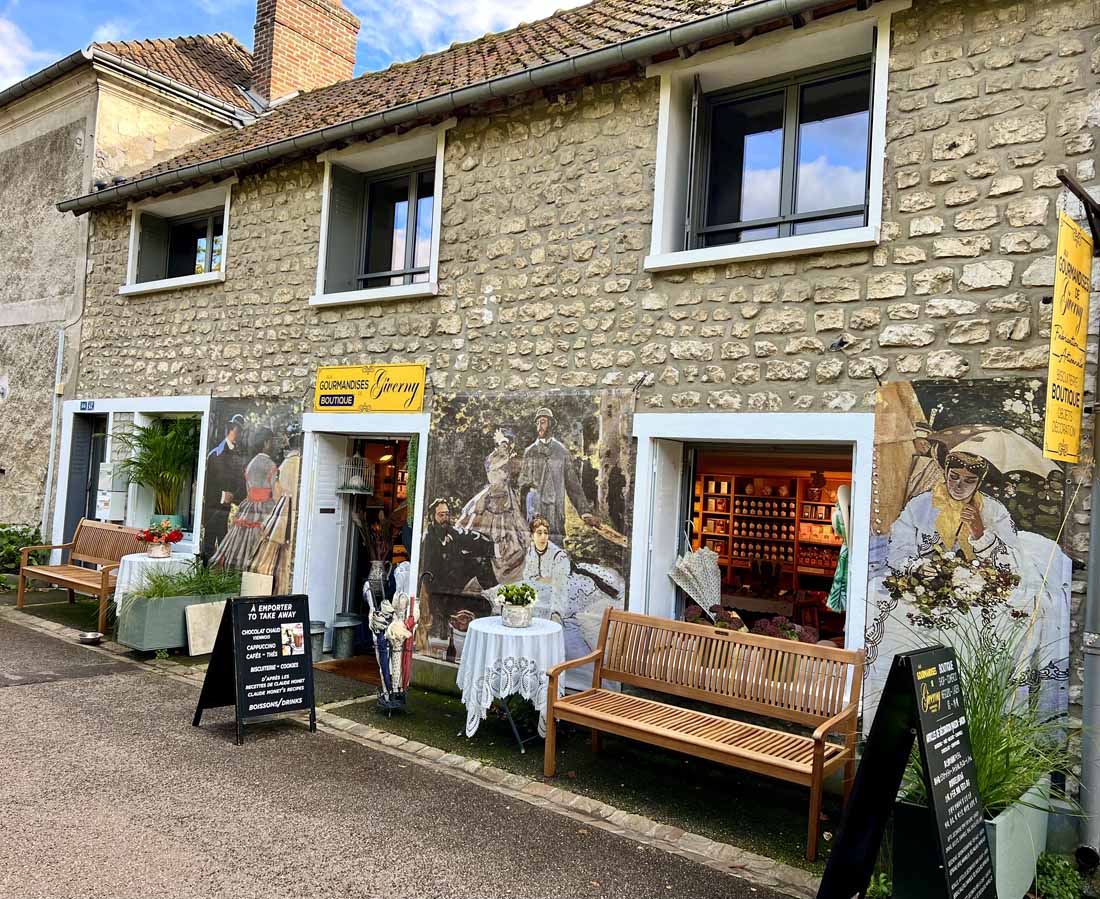
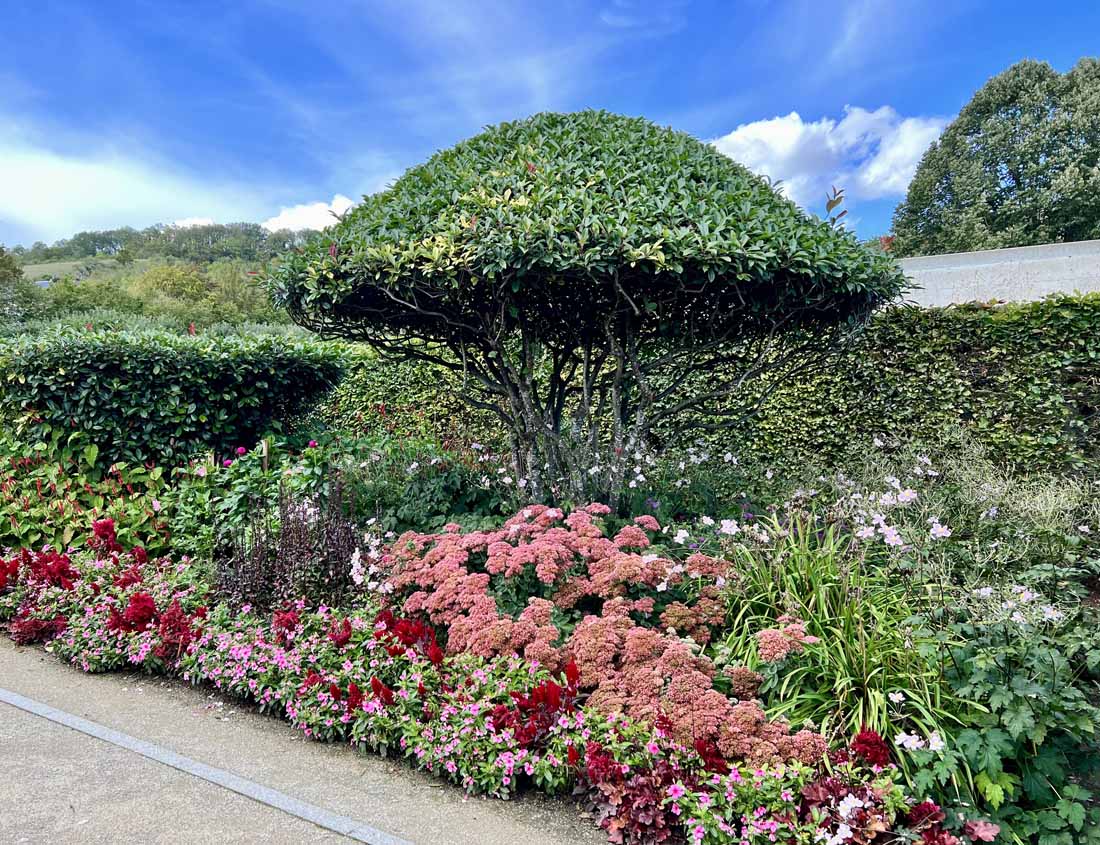
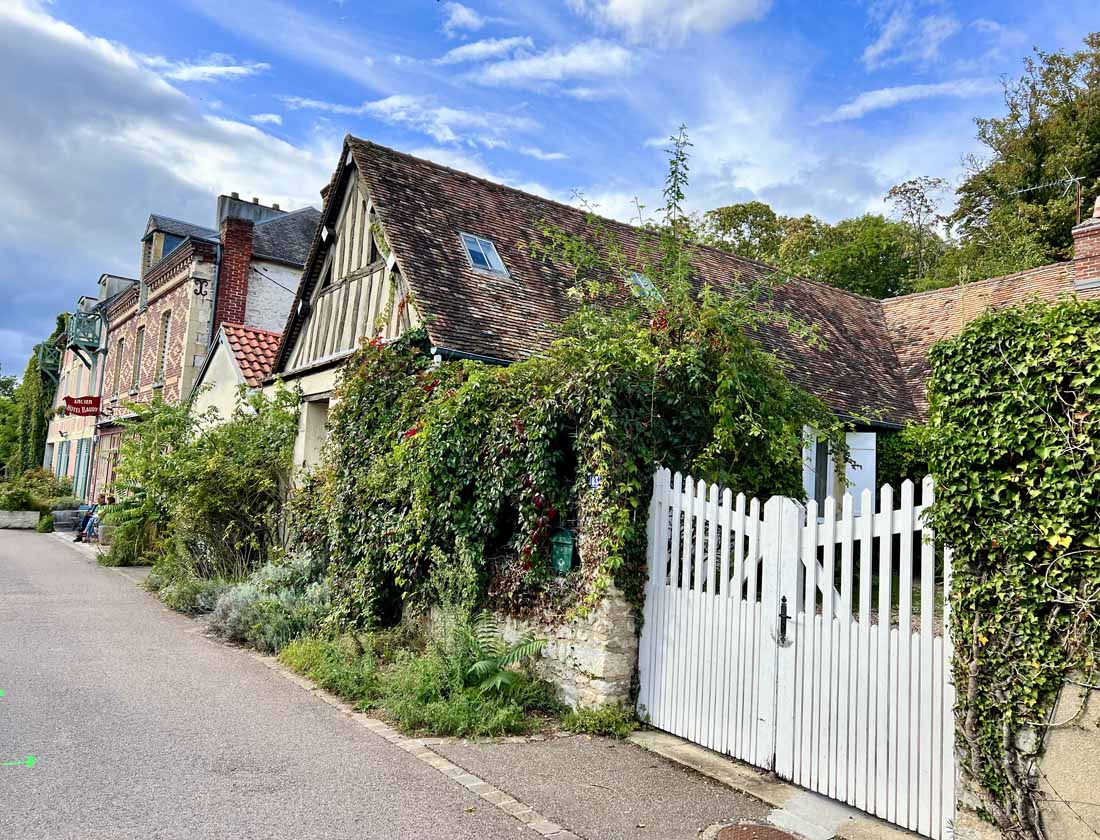
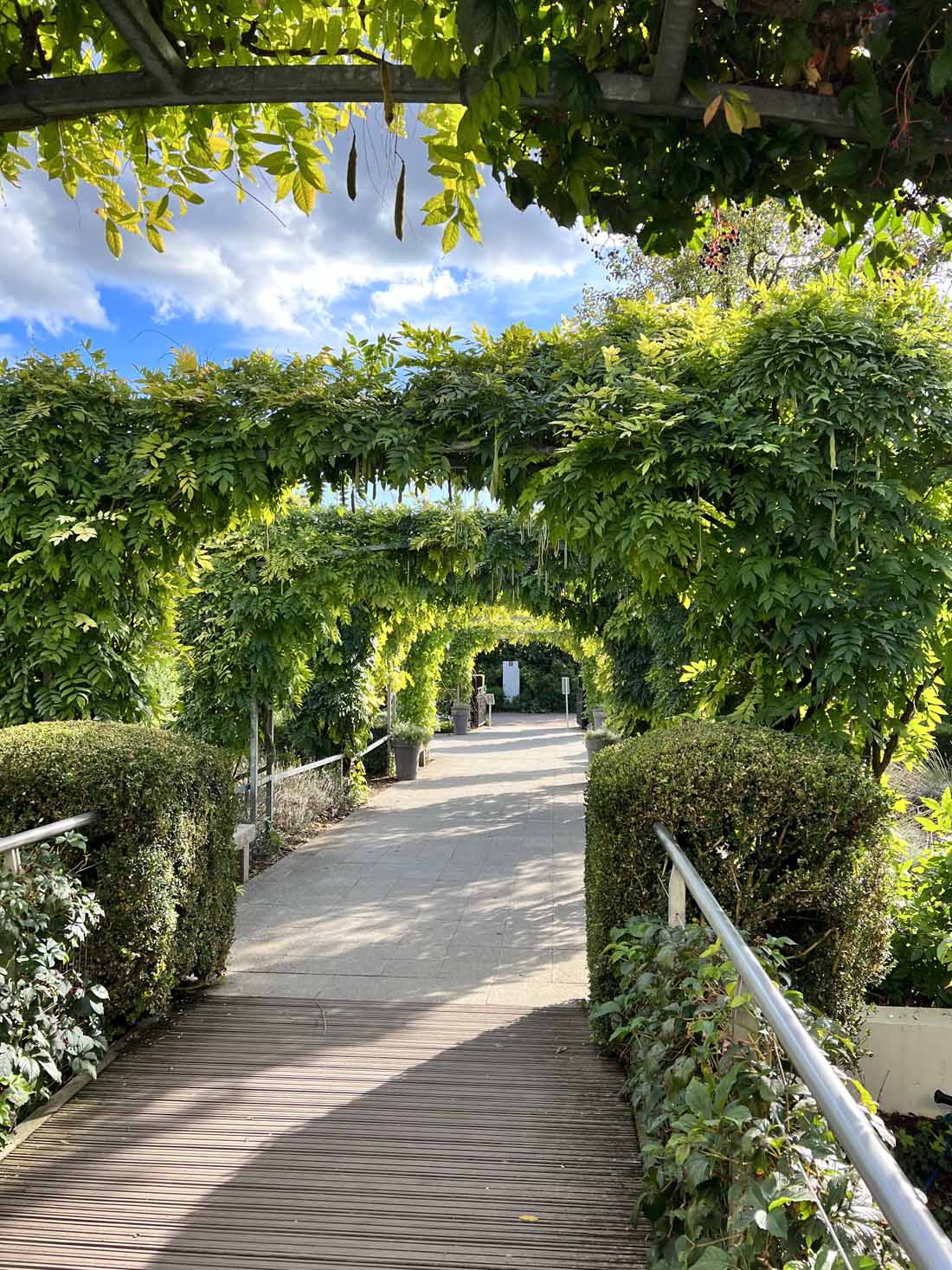
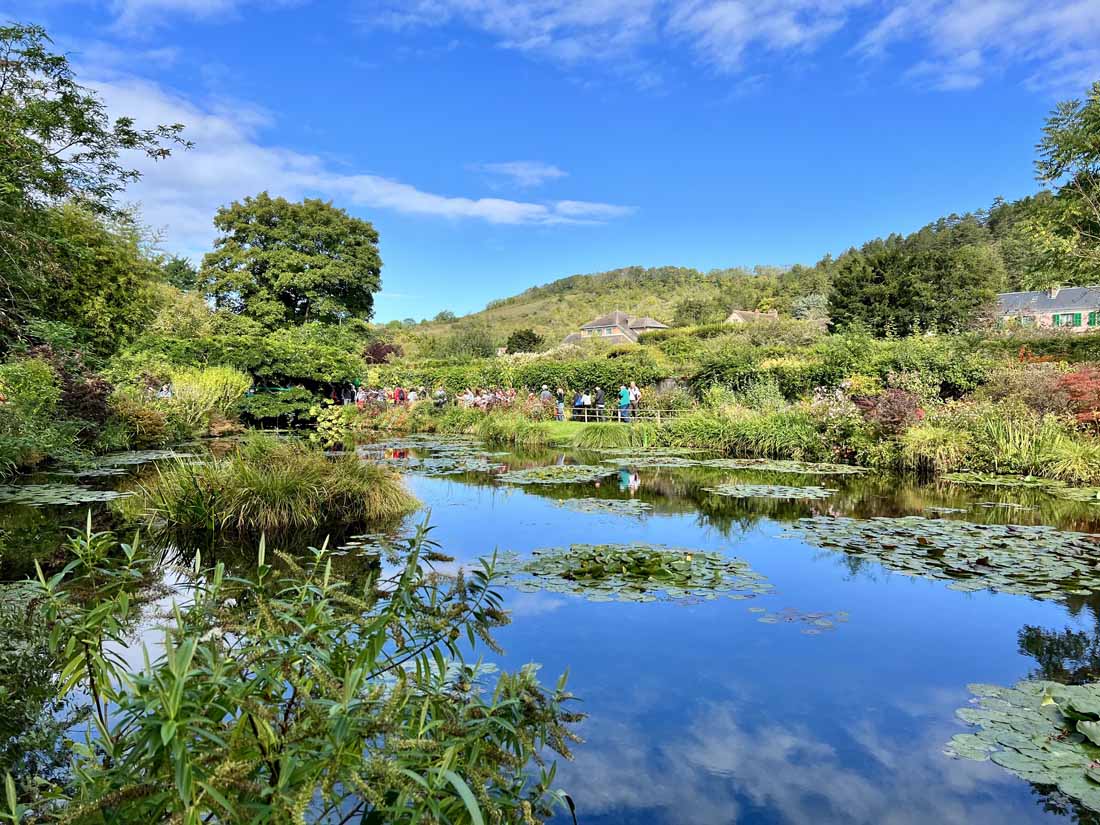
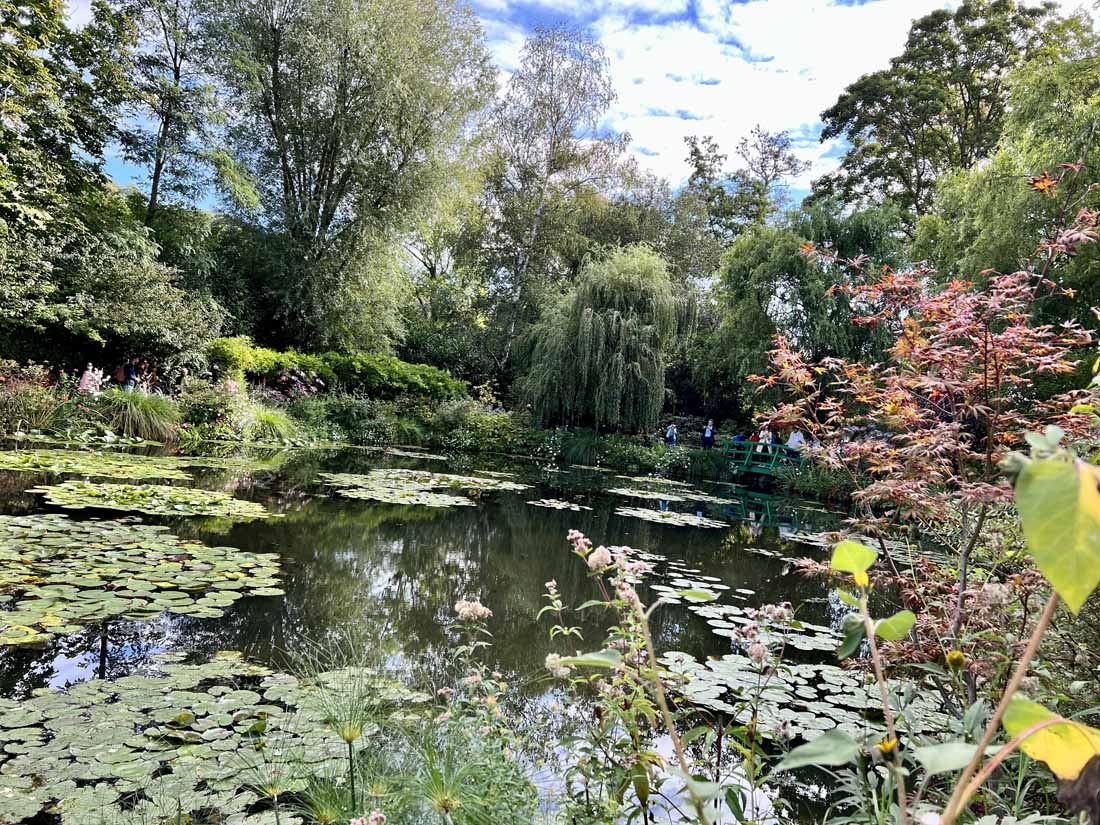
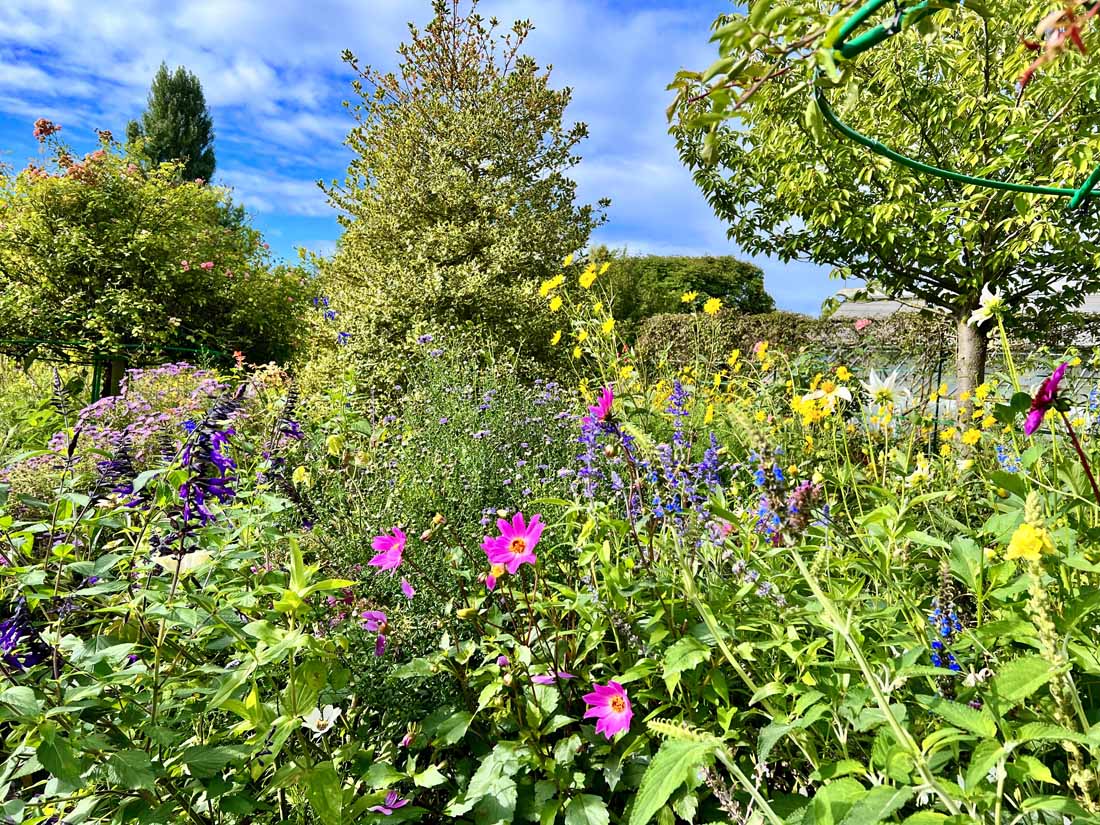
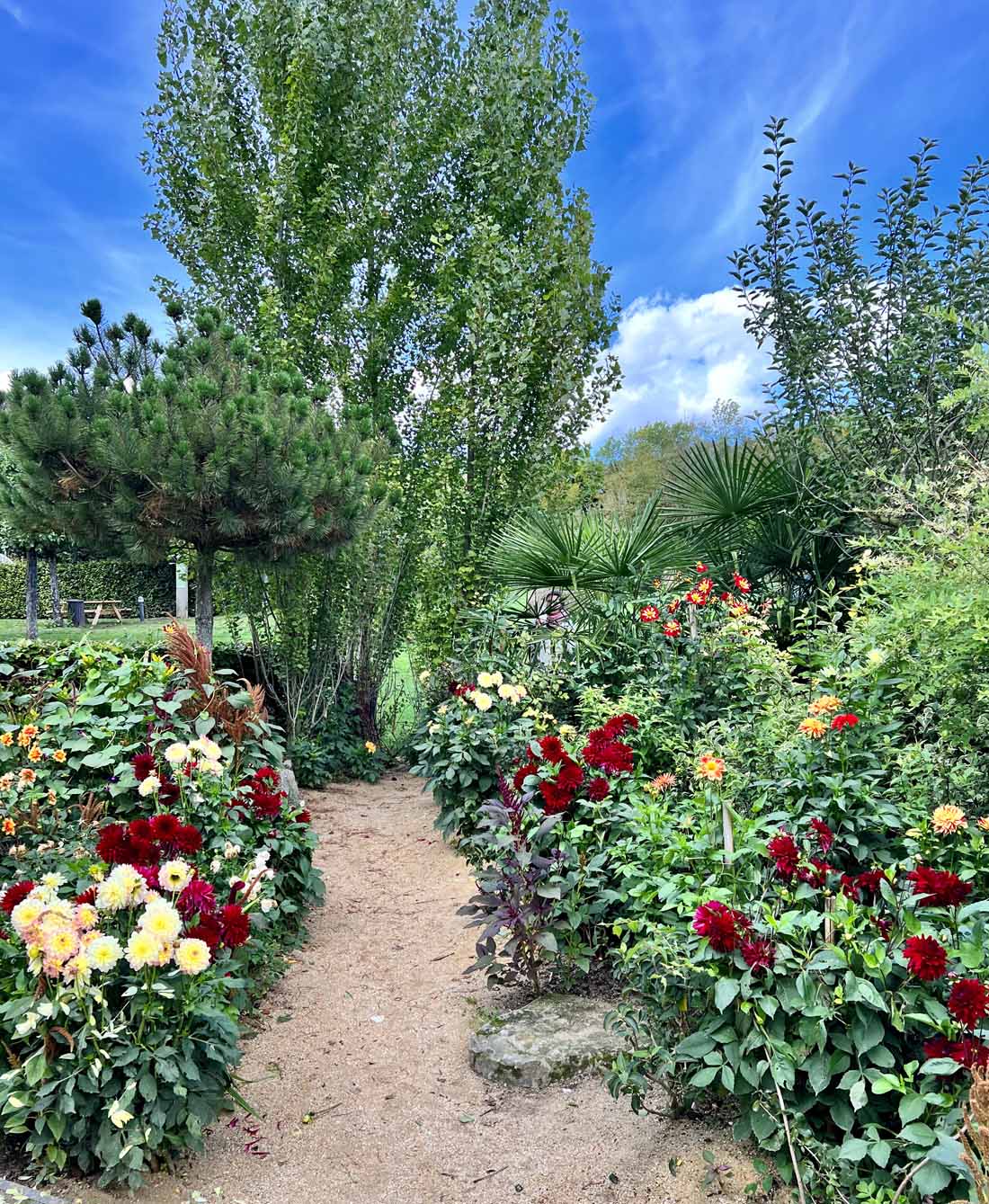
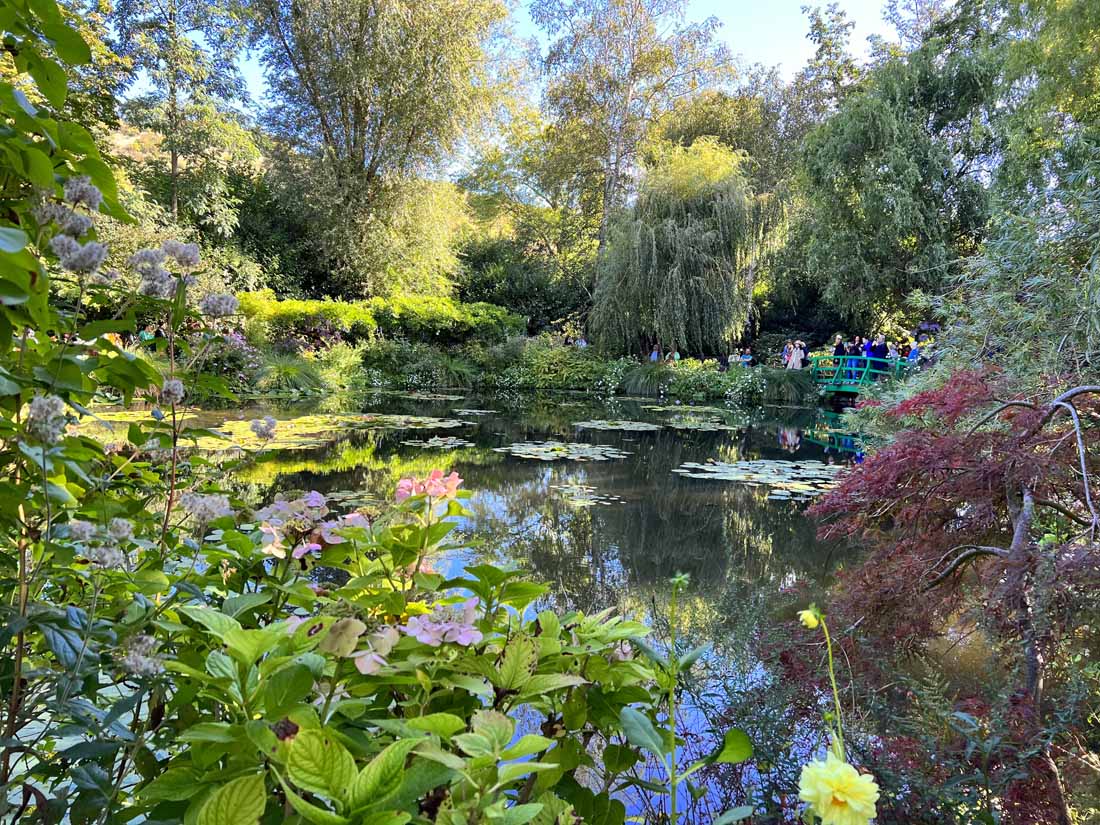
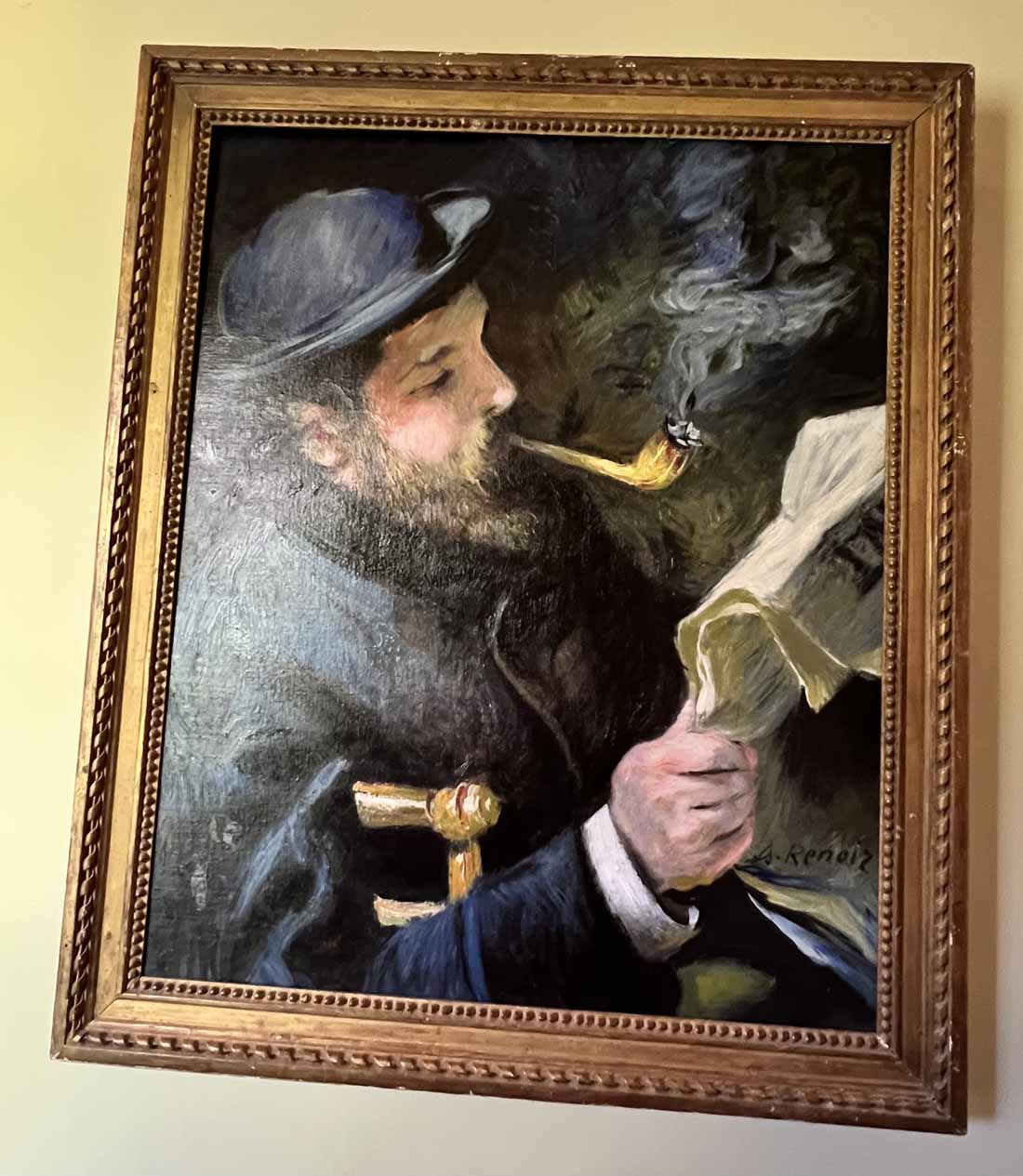
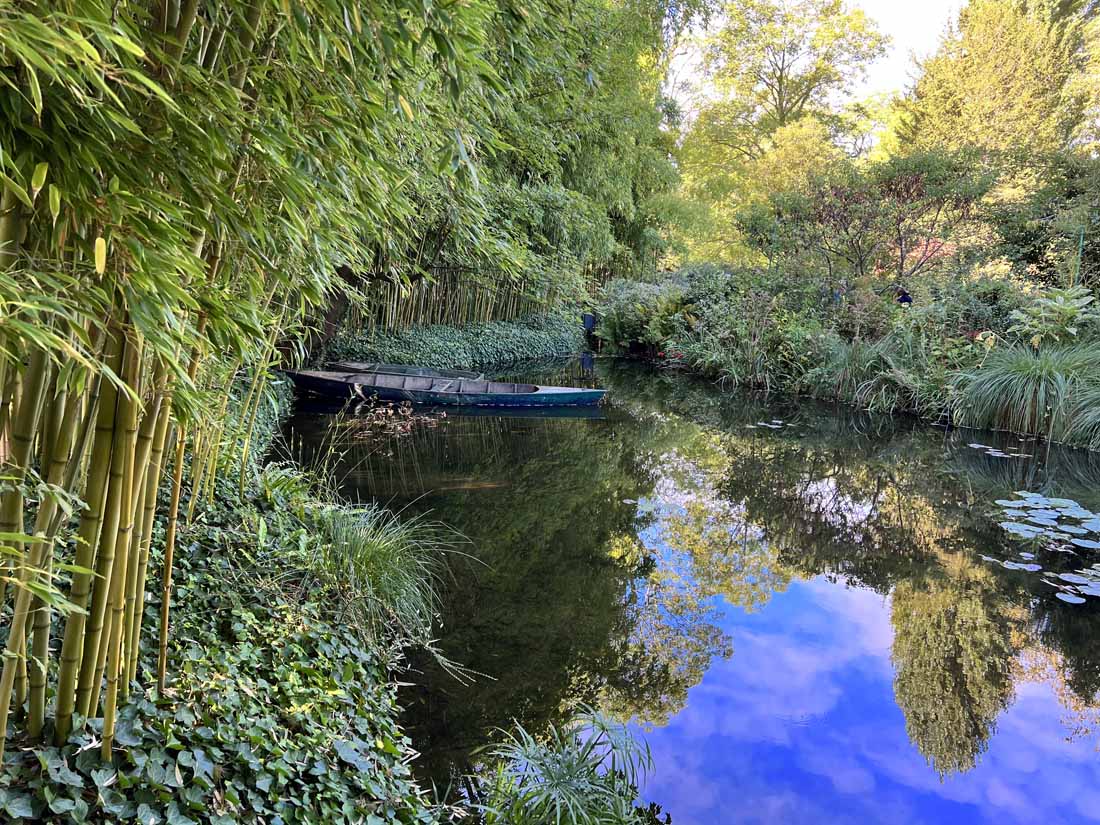
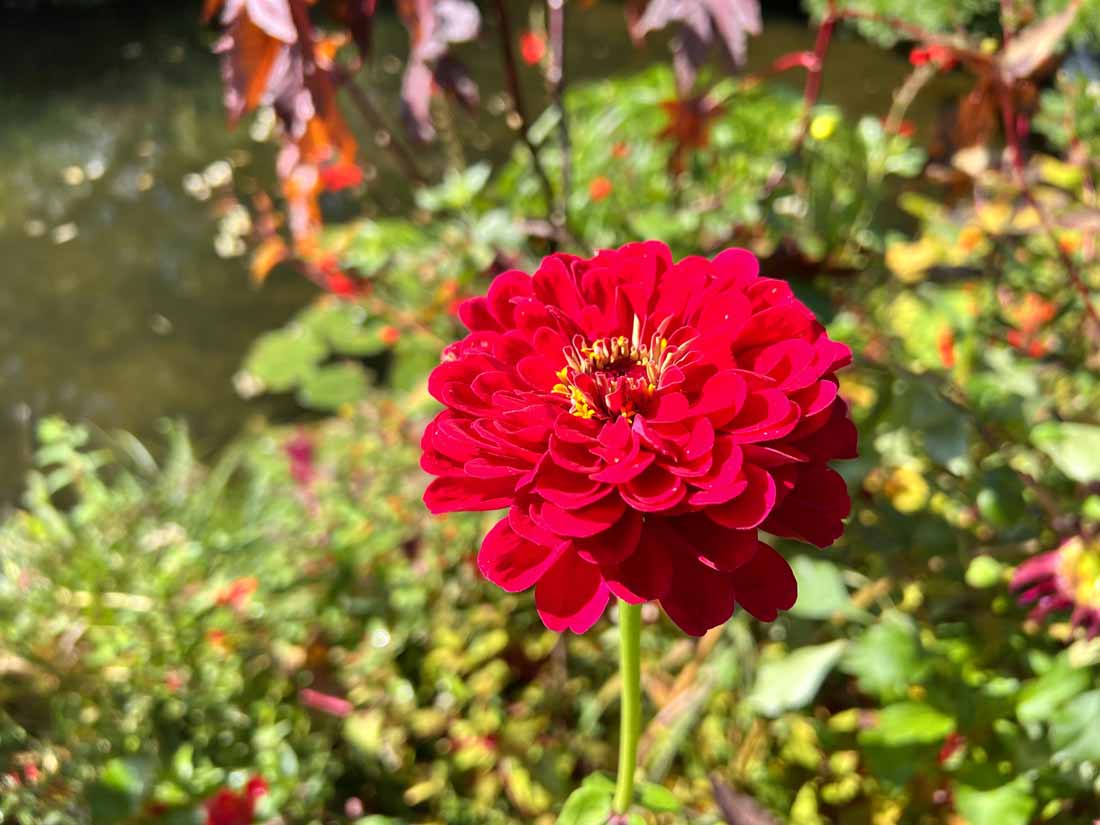
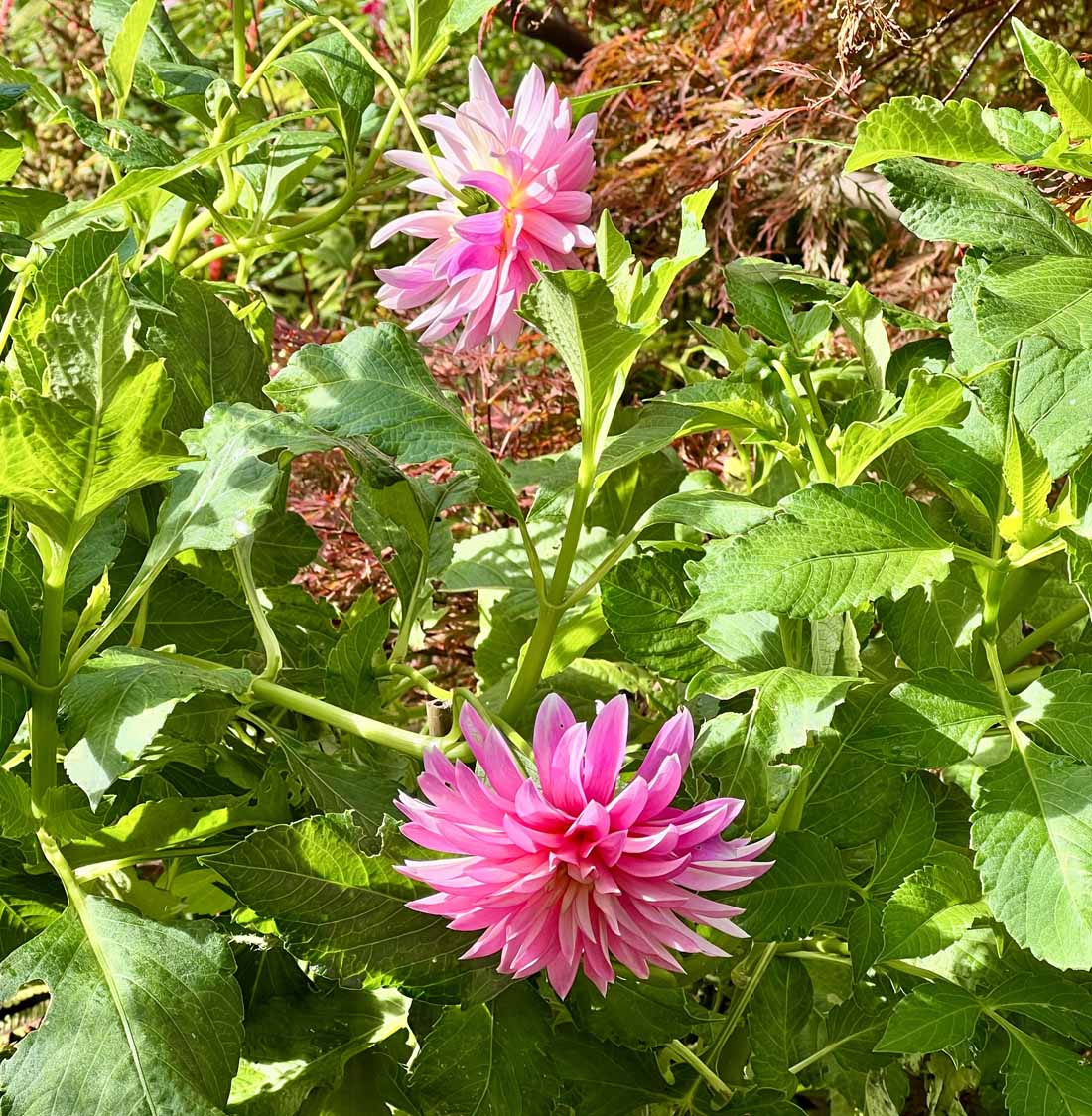
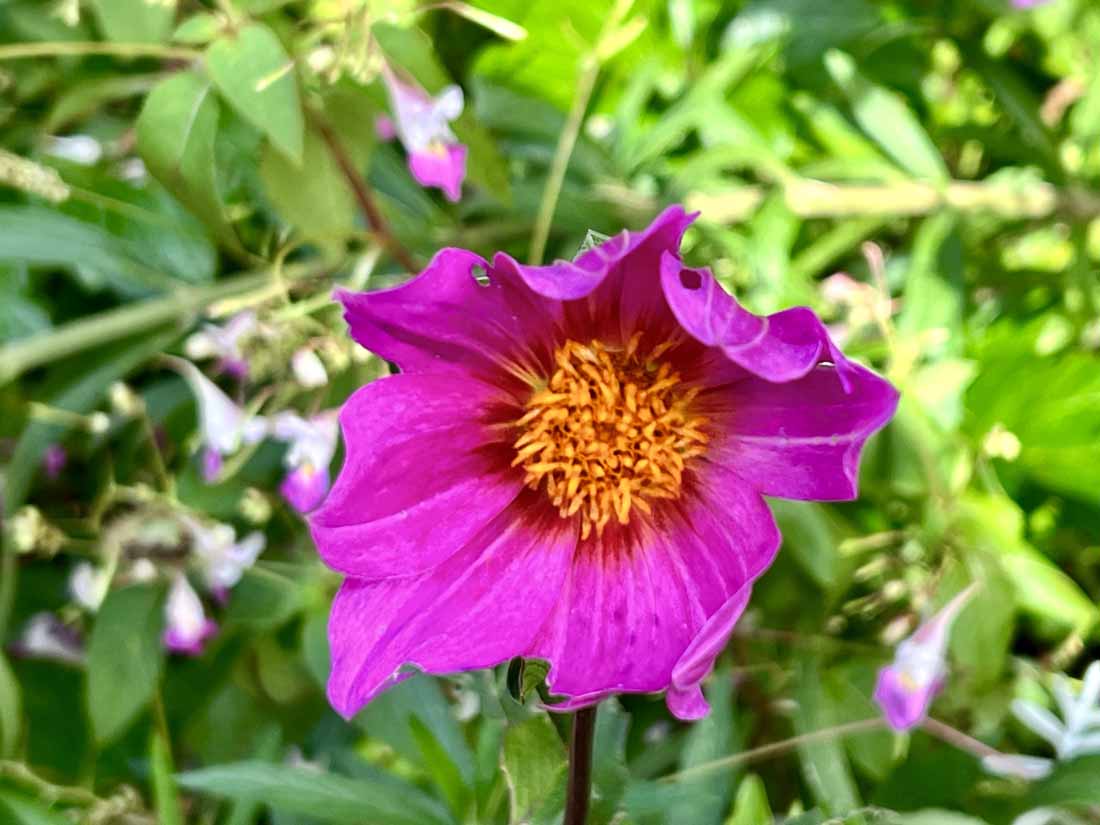
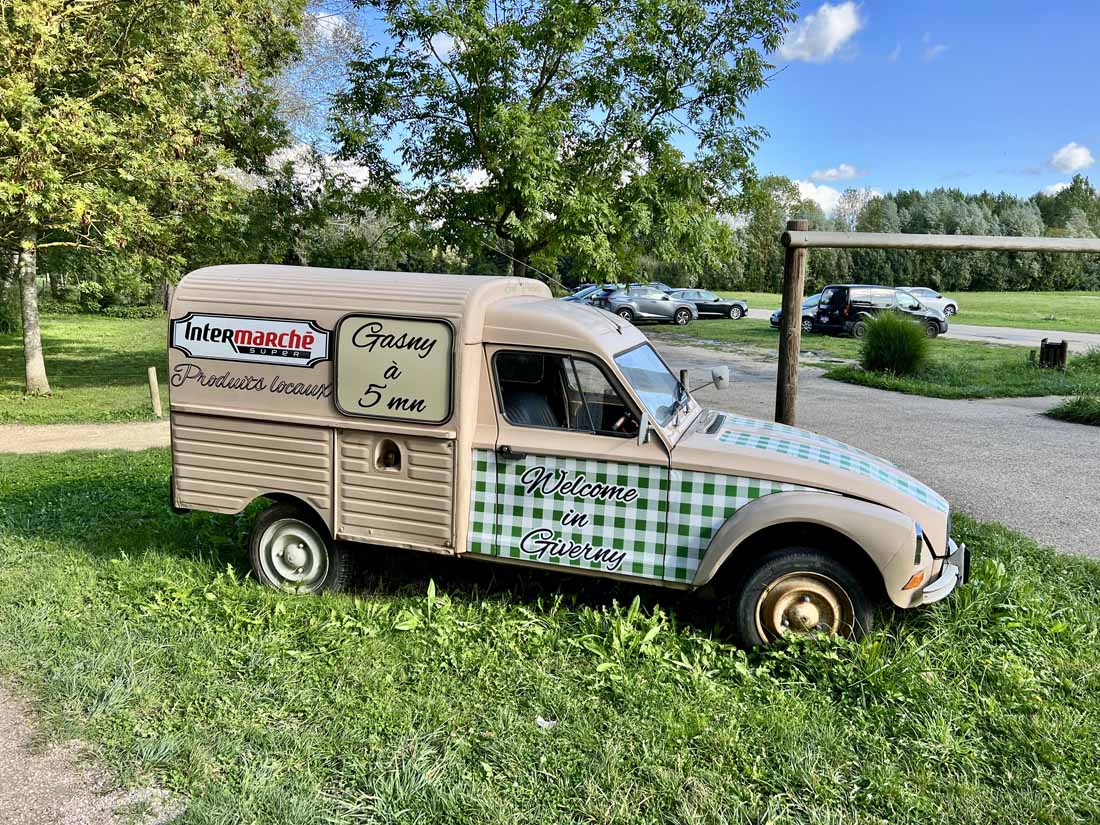
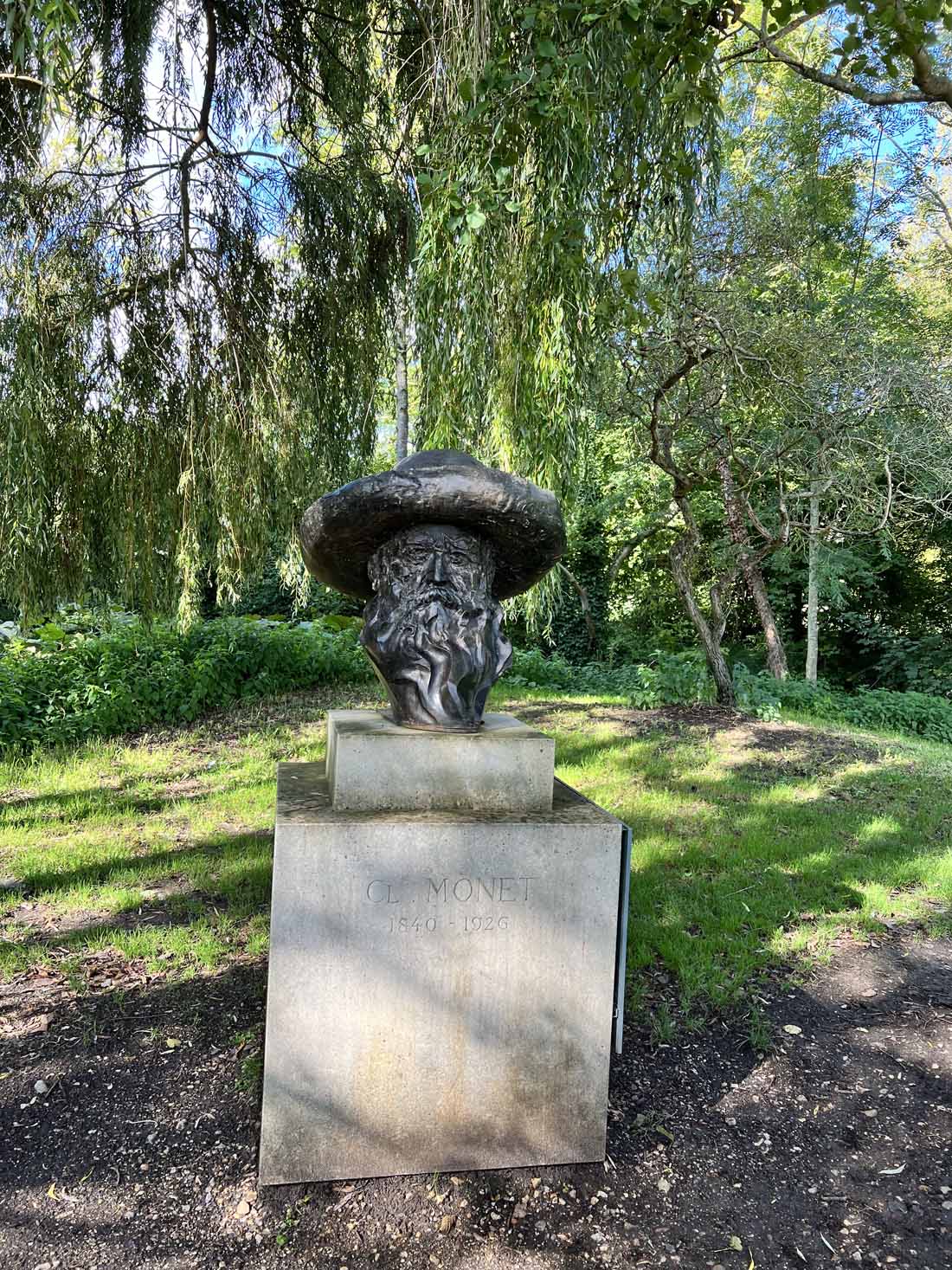
FAQ about visiting Claude Monet’s House & Gardens
Where is Claude Monet's house located?
Claude Monet’s house is located in the village of Giverny, which is about 80 kilometers (50 miles) west of Paris, France.
What can I see at Claude Monet's house?
Visitors can explore the interior of Monet’s house, including his living quarters and studio. The house has been preserved to reflect the way it looked when Monet and his family lived there.
What are the main gardens at Claude Monet's property?
There are two main gardens: the Clos Normand, a flower garden in front of the house, and the Water Garden, which is across a small road and is famous for its water lilies and Japanese bridge.
What is the significance of the Water Garden?
The Water Garden is an iconic part of Monet’s property. It features a pond with a Japanese bridge, water lilies, weeping willows, and other plants. Monet’s series of paintings depicting water lilies were largely inspired by this garden.
When is Claude Monet's house and gardens open to visitors?
The house and gardens are usually open to visitors from April to November. However, specific hours may vary, so it’s recommended to check the official website for up-to-date information.
Can I buy tickets in advance?
Yes, it’s advisable to buy tickets in advance, especially during peak tourist seasons, to avoid long lines.
How much is the admission fee to Claude Monet's house and gardens?
Admission fees may vary depending on factors such as age, nationality, and whether you choose to visit the house, gardens, or both. It’s best to check the official website for current pricing.
Are guided tours available?
Yes, guided tours are often available for an additional fee. They provide a deeper insight into Monet’s life, art, and the history of the house and gardens.
Are there facilities for disabled visitors?
Yes, the house and gardens are generally accessible to visitors with disabilities. There are ramps and paths to accommodate wheelchairs, and special arrangements can be made for those with specific needs.
Can I bring food or have a picnic on the grounds?
Eating and drinking are typically not allowed in the gardens or the house. However, there may be designated areas for picnicking nearby. It’s best to inquire on-site or check the rules beforehand.
Are pets allowed on the premises?
In general, pets are not allowed in Claude Monet’s house and gardens, with the exception of service animals.
Is there parking available?
Yes, there is usually parking available for visitors. Be sure to check if there’s a separate fee for parking.
Is there a gift shop on the premises?
Yes, there is usually a gift shop where visitors can purchase souvenirs, books, and artwork related to Claude Monet.
Are there any restrictions on photography?
Photography is allowed, but tripods and selfie sticks are not permitted.
Is the village of Giverny worth exploring?
Yes, the village of Giverny is charming and worth exploring. It offers a glimpse into the picturesque countryside that inspired Monet’s artwork.
Please note that if you’re planning to visit after September 2021, there may have been changes or updates, so I recommend checking the official website for the most current information.
Are there any special events or exhibitions held at Claude Monet's house and gardens?
Special events, exhibitions, and cultural programs may be organized throughout the year. It’s recommended to check the official website for information on any upcoming events.
How much is the admission fee to Claude Monet's house and gardens?
Admission fees may vary depending on factors such as age, nationality, and whether you choose to visit the house, gardens, or both. It’s best to check the official website for current pricing.
Can I take public transportation to Giverny?
Yes, it is possible to take a train or bus from Paris to Giverny. The journey takes approximately 1-1.5 hours.
Remember that details may change over time, so it’s always best to verify any specific information or updates on the official website before planning your visit.
When is the best time to visit Monet's Gardens?
The best time to visit Monet’s garden is during late spring to early summer (April to June) when the flowers are in full bloom and the garden is at its most vibrant and picturesque. The weather is generally pleasant during this time, making it an ideal period for a visit. Please keep in mind, though, that this would be the busiest time. We visited on a Saturday, which was likely more crowded than on weekdays during that season.

